South Carolina Revolutionary War Road Trip
10-Part Series
Did you know more Revolutionary War battles happened in South Carolina than in any other state? Explore the battlefields, historic sites, and museums with this 10-part series of road trips across the state.
George Washington cobbled together the Continental Army and fought the British to a standstill in the North. Francis Marion and Thomas Sumter pulled together patchwork militias and fought the British to a standstill in the South. A year and a half after they invaded South Carolina, British General Lord Cornwallis surrendered to Washington at Yorktown.
And this Revolutionary War road trip across South Carolina is the best way to learn how Great Britain’s Southern Strategy fell apart.
Start at the best visitor center in the state for learning how to explore the American Revolution in the South, visit the gravesites and museums dedicated to Sumter and Marion, walk the ground of the final pitched battle of the war, and visit a recently revealed earthen fort built by the British.
Learn everything you need to know about the towns, points of interest, things to do, and key stops from Sumter to Moncks Corner, South Carolina.

This post is proudly sponsored by Santee Cooper Country and South Carolina Association of Tourism Regions.

Table of Contents
Cities & town
Points of Interest
Key Stops
Road Trip Map
How to use this map | Click the icon in the top-left corner to open the Map Legend, then click on any of the legend items to display more information. If you have a Google account, click the (very faint) star at the end of the map’s name to save this map to your account, then access the map from your smartphone during your trip.
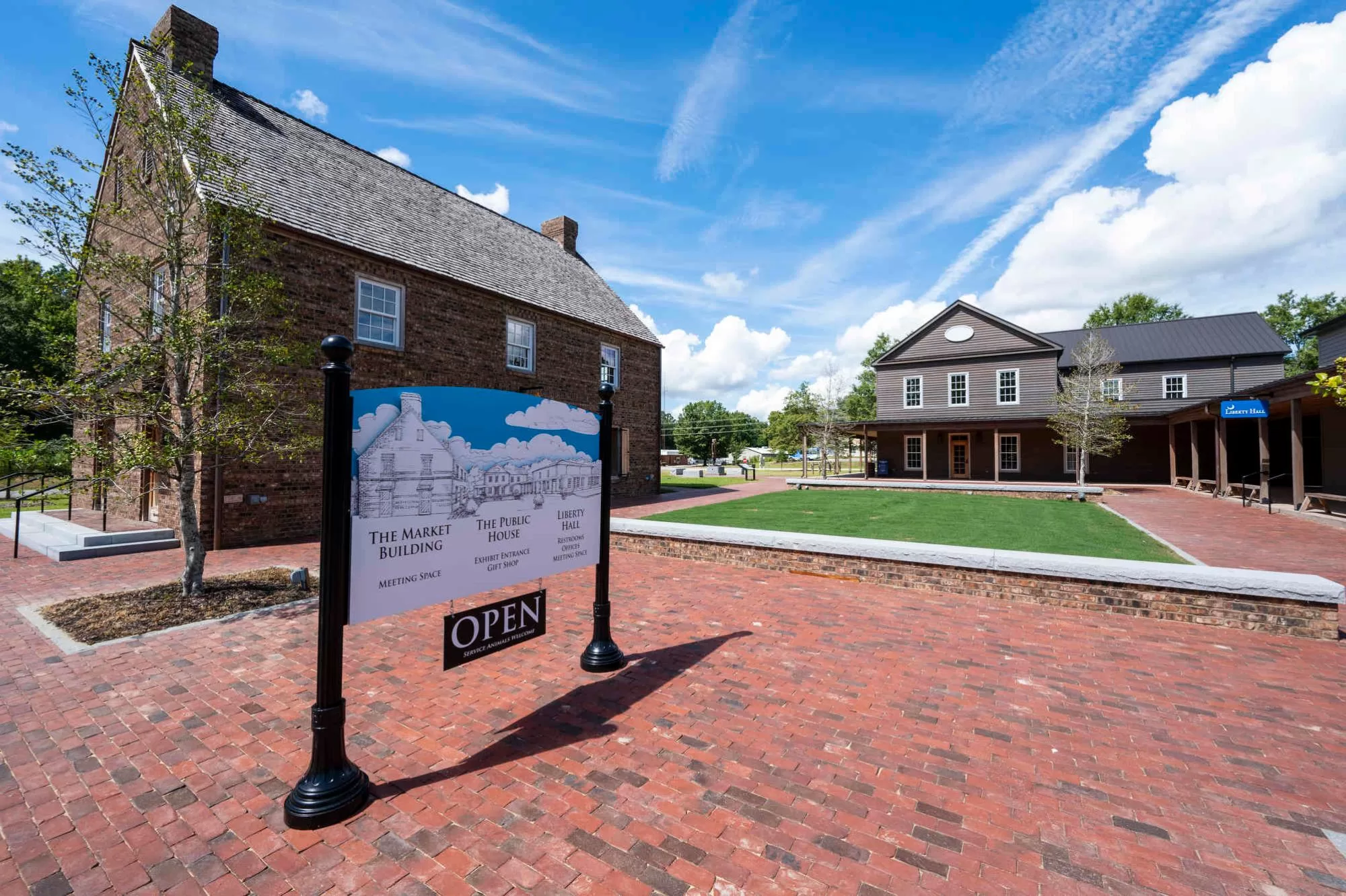
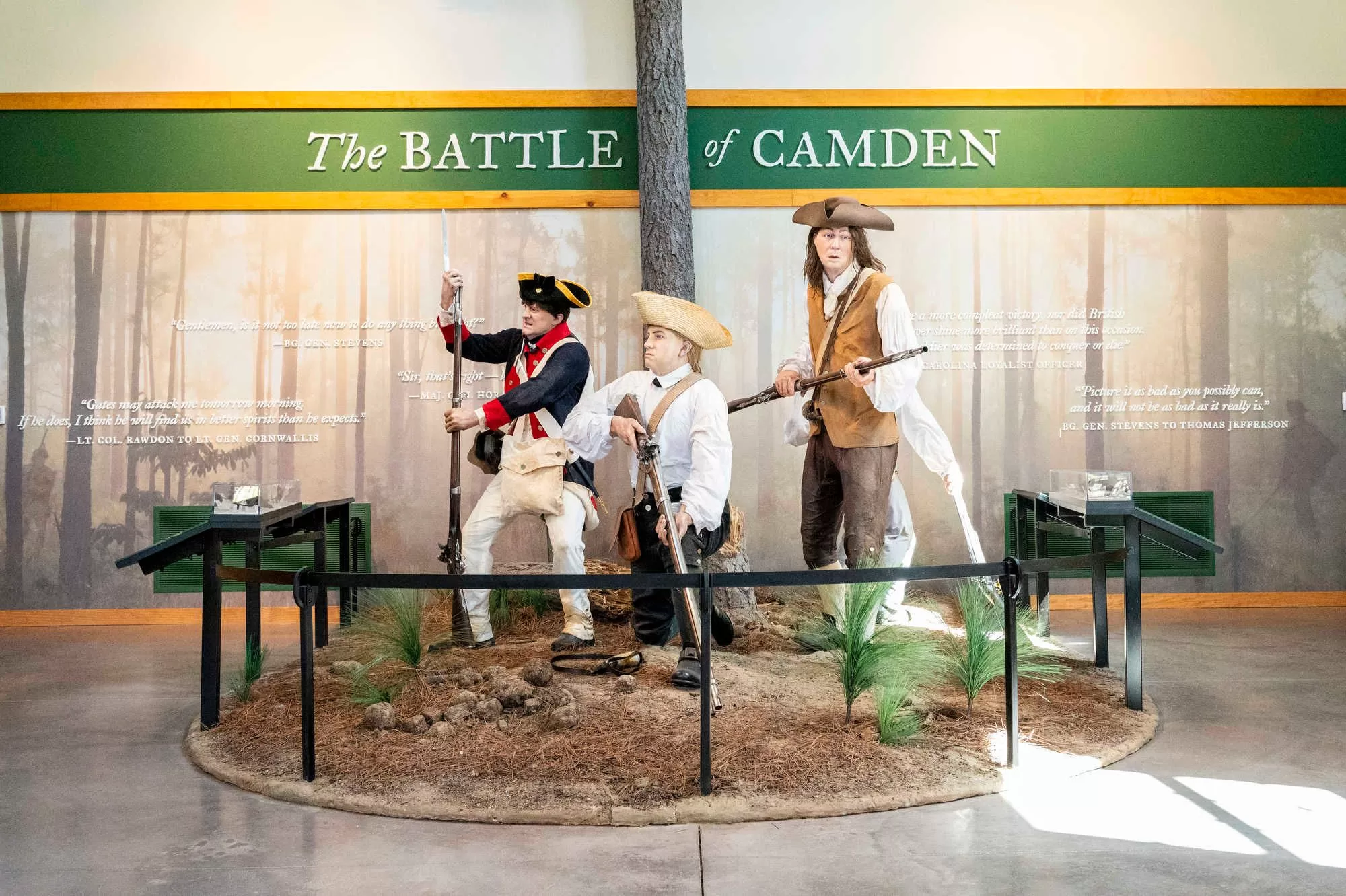
No. 1
Revolutionary War Visitor Center
The Revolutionary War Visitor Center is the best place to learn about Great Britain’s Southern Strategy and the American Revolution historic sites in South Carolina. “This is the visitor center for the Southern Campaign of the Revolutionary War,” Rickie Good, museum manager, explained.
READ MORE: A South Carolina Revolutionary War Road Trip: Part 1 – The Olde English District
Opened in 2021, the visitor center is a small complex of buildings in Camden, South Carolina. During the Revolutionary War, Camden was quickly captured after the Fall of Charleston in 1780. The vital inland town remained in British hands for almost a year.
Explore the timeline of the Revolutionary War, read about the pivotal people who kept the war going after Charleston was captured, and see lifelike mannequins dressed as British Regulars, American Continentals, and Patriot militia help bring it to life.
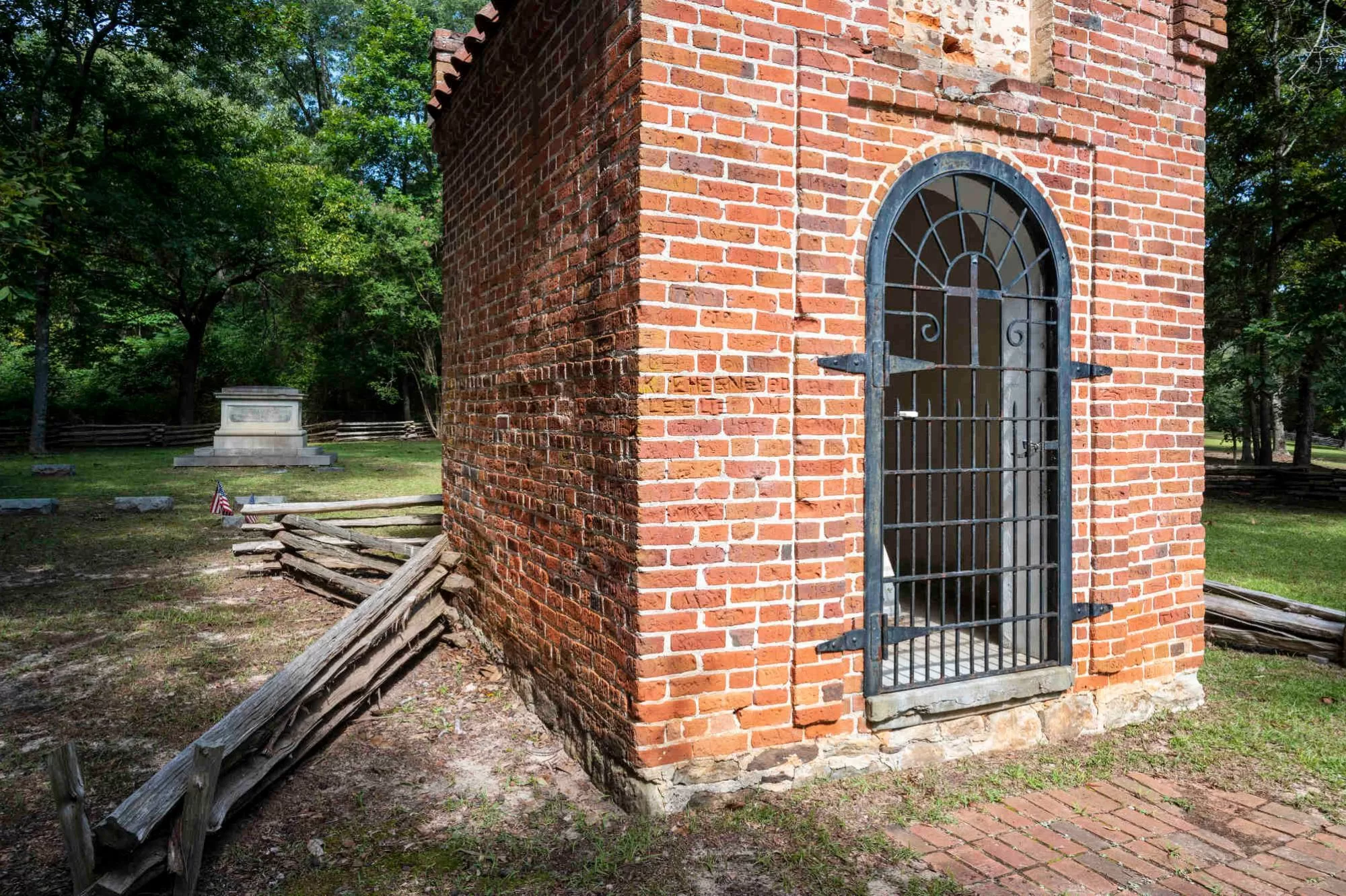
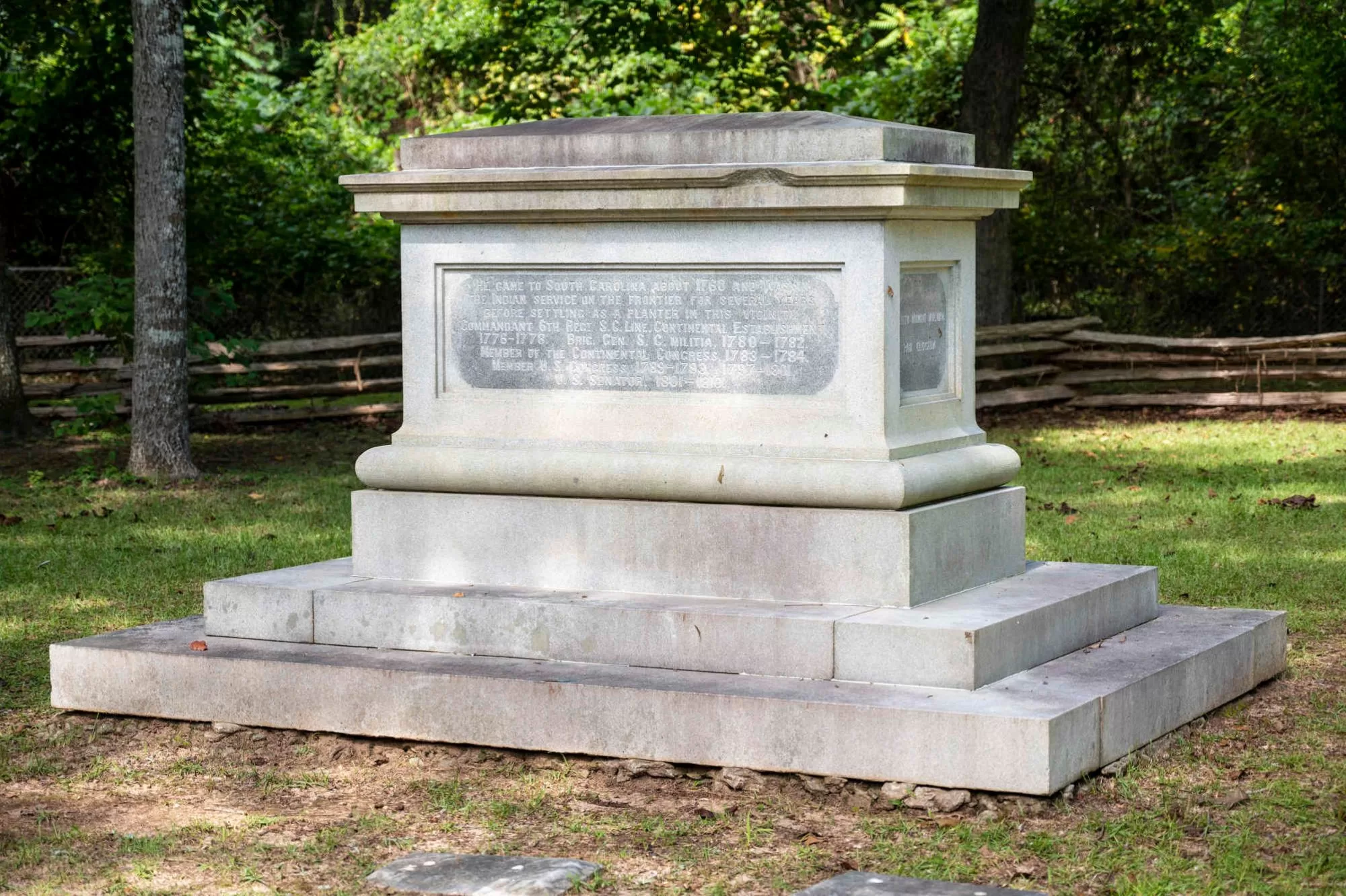
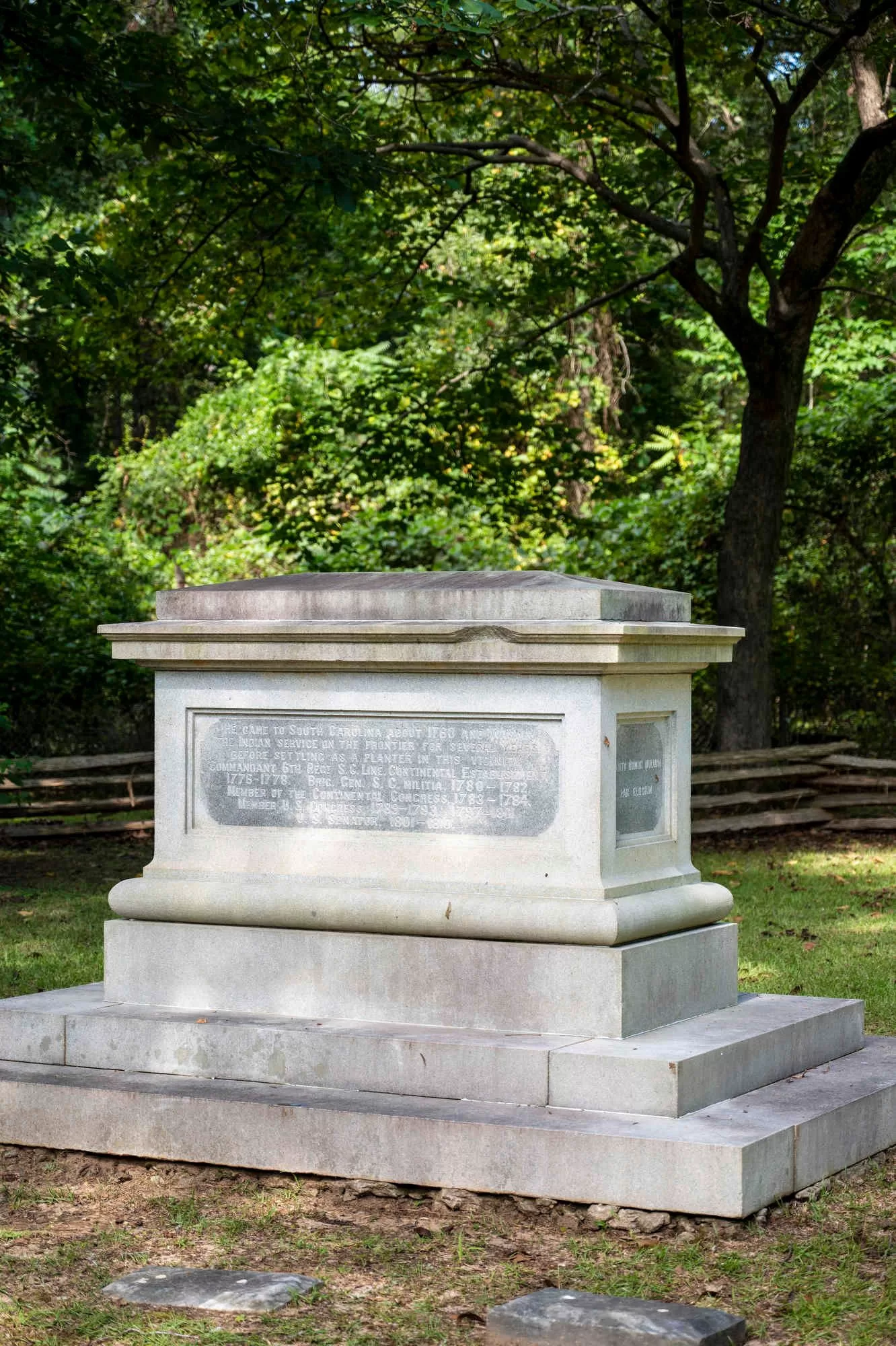
No. 2
General Thomas Sumter Gravesite
Thomas Sumter was born near Charlottesville, Virginia, in 1734. After running afoul of unpaid debts, he fled to South Carolina. He established a small but thriving plantation and settled into the life of a planter. In 1776, he was appointed a lieutenant colonel in the 2nd Regiment of South Carolina. But after years of inactivity, he resigned and returned to his plantation.
After the Fall of Charleston in May 1780, British General Lord Cornwallis unleashed Lieutenant Colonel Banastre Tarleton in the South Carolina backcountry. Tarleton’s mission was to subdue any further rebellion and enlist Loyalists. To achieve the first goal, he frequently burned the homes and plantations of Patriots, like Sumter’s plantation.
Sumter returned to active duty as a brigadier general in the South Carolina militia. He kept the British on guard through raids and engagements for the next two years, earning the nickname “Gamecock” because of his fierce fighting tactics.
When Sumter died in 1832 at 97, he was the oldest living Revolutionary War general. He is buried at General Thomas Sumter Family Park and Cemetery, an interesting amalgamation of public park and gravesite. The route is well-marked with road signs leading to a gated entrance to the wooded park. Sumter’s wife, son, and daughter-in-law are buried in the cemetery with him.
Did You Know?
Sumter’s tomb remained unmarked for 71 years. In 1907, the South Carolina legislature passed a bill authorizing the construction of a monument in the cemetery.

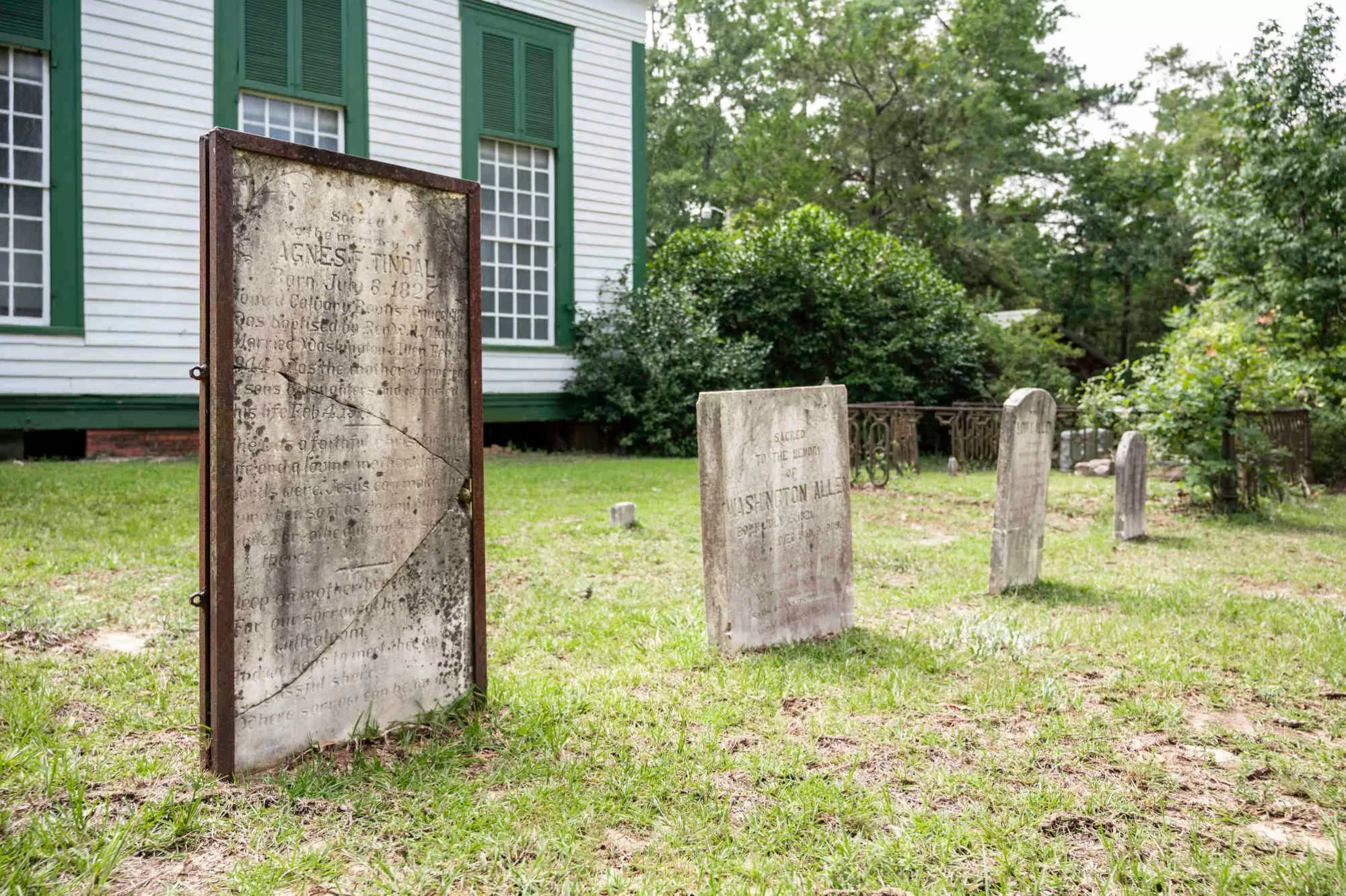
Point of Interest
High Hills Baptist Church
Organized in 1770, High Hills Baptist Church is the second-oldest Baptist congregation in South Carolina. At the time, it was a rare example of a non-Presbyterian denomination in the South Carolina backcountry. The current Greek Revival-style church was built on land donated by Thomas Sumter.
In 1774, Richard Furman was ordained as the pastor of the church. Although he volunteered to join the South Carolina regiment at the beginning of the Revolutionary War, he was convinced instead to use his public speaking talents to gain support for independence from the public. After capturing Charleston in 1780, British General Lord Cornwallis placed a sizable bounty on Furman, forcing him to flee to Virginia.
After the war, Furman returned to South Carolina and helped organize the South Carolina State Baptist Convention. When the South’s first Baptist college was founded in 1826, it was named Furman University in his honor.


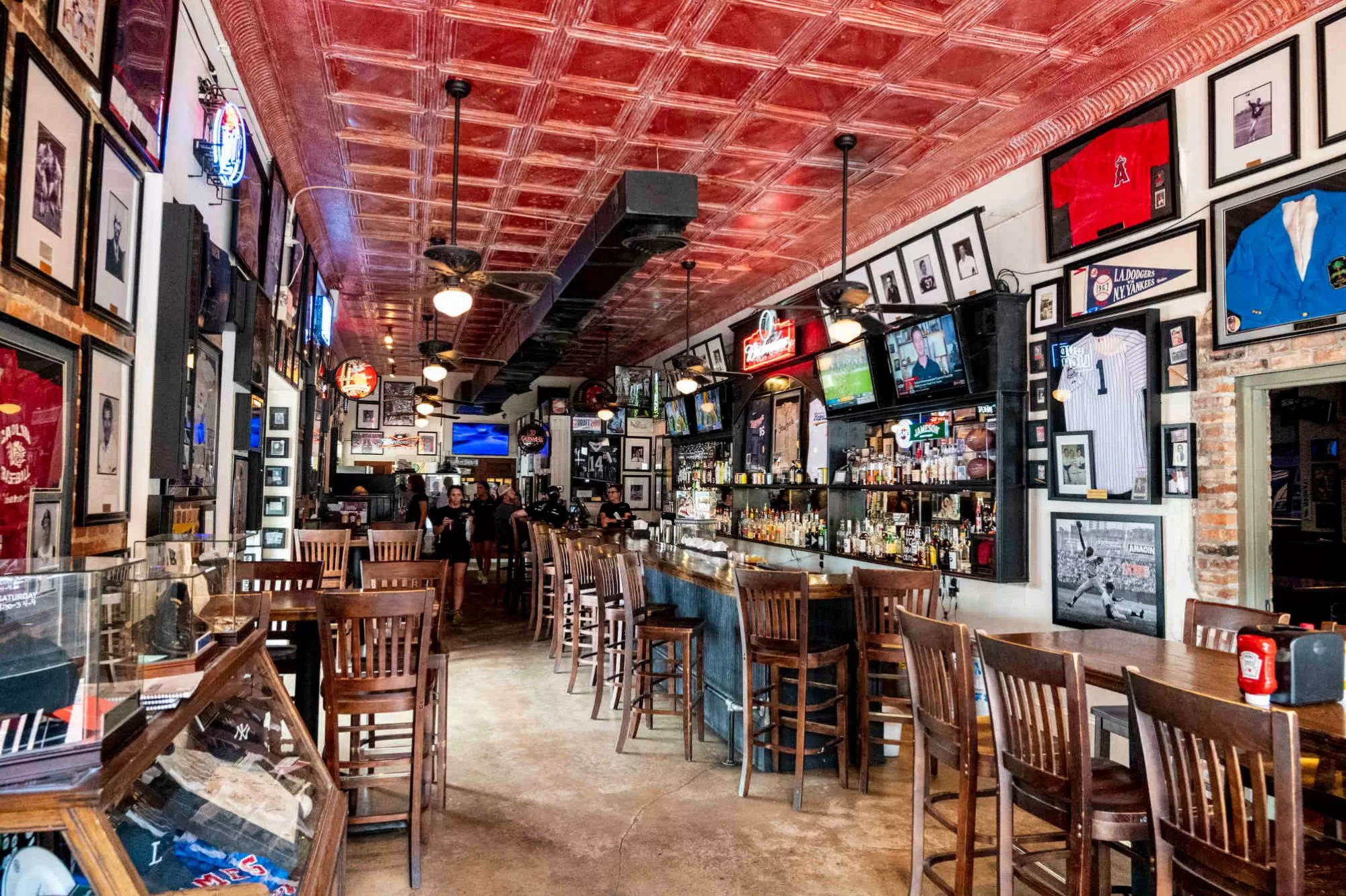

Destination
Sumter, SC
After the Revolutionary War, Senator John Lewis Gervais from Ninety Six introduced a bill to move the state’s capital from Charleston to a new location. Several sites were proposed, including Statesville, near Thomas Sumter’s plantation and ten minutes from Sumter.
Sumterville, named after the local Revolutionary War hero, was established in 1845 and renamed Sumter a decade later. The town’s central location – which would have made it a good place for a capital – made it ideal for a railroad hub. The town prospered as a major industrial center into the 20th century.
In 1941, Shaw Field was built as a U.S. Army Air Corps training center. After the United States Air Force was created in 1947, the airfield was renamed Shaw Air Force Base. The active military base is home to the 20th Fighter Wing – you’ll likely hear the aircraft over the skies while visiting Sumter.
Downtown Sumter stretches several blocks along Main Street. Plentiful parallel parking and wide sidewalks make it easy to explore the area. Look for wonderful boutique shops and antique stores while finding a place to eat.
J O’Grady’s looks like any other sports bar, but the food is some of the best in town. Appetizers are enough to serve as a meal. If you can’t decide how to order your burger from the options, let the staff help – they know what works best together. Be sure to ask for silverware because you’ll need it to finish any burgers and sandwiches.
Sumter Original Brewery is the town’s first, opened in 2022 by Gary Shuler. The 35,000-square-foot, three-story building also features the town’s only rooftop seating. Enjoy the game room and cold drinks while enjoying a spectacular view.
St. Louis chef Kyle Rhodes opened Sidebar in 2015 to serve Texas-style barbecue. Meats are smoked daily, and the sides are homemade. Browse the bourbon menu to find something to go along with the savory meal.
Jeffrey Lampkin’s Country Boy Kitchen serves soul food with large portions and fresh ingredients. It’s a local favorite, but there’s plenty of seating inside the simple restaurant.
Enjoy a fine dining experience in Sumter at Hamptons. Hardwood floors and gorgeous chandeliers set the mood. The menu changes frequently, sometimes daily, to keep up with the fresh seasonal market.
Where to Stay in Sumter, SC
You’ll find plenty of hotels in Sumter along U.S. Highway 378 near Shaw Air Force Base. But for the best experience, book a room in one of these downtown lodges.
Hyatt Place opened a gorgeous hotel on Main Street in 2022. It’s within walking distance of all the downtown eateries, and you can relax by the swimming pool when you return to the comfortable guest rooms. Book now with Booking.com or Expedia.com
1912 Bed and Breakfast is a spectacular brick mansion from wonderful hosts Tracey and Tommy McLaughlin. Experience luxury with ten-foot ceilings and impeccable furniture on the peaceful property just minutes from downtown. Book now with Booking.com or Expedia.com
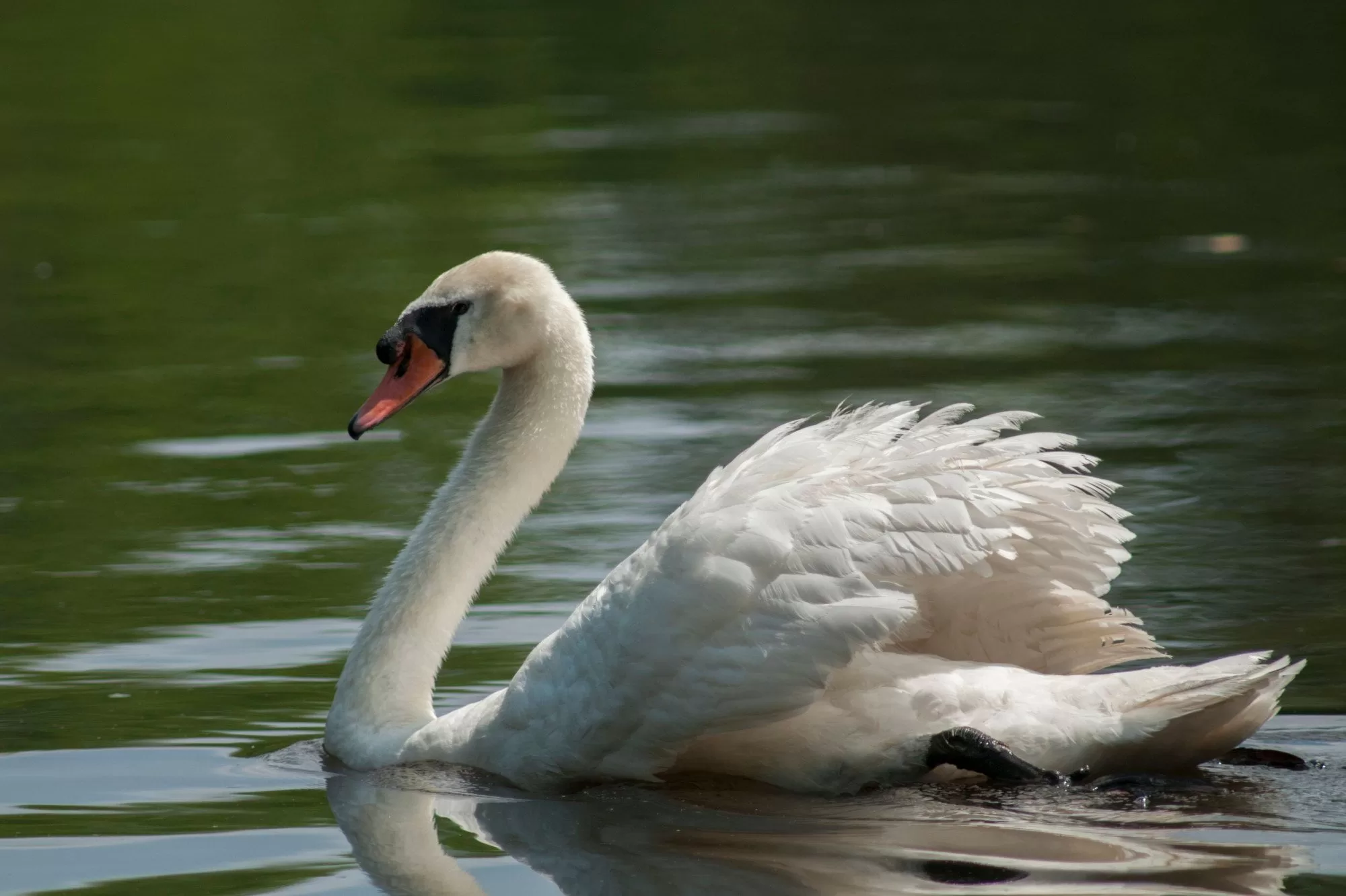
Point of Interest
Swan Lake Iris Gardens
The Swan Lake Iris Gardens is the only public park in the country where visitors can see all eight species of swans. The 150-acre park started in 1927 when Hamilton Carr Bland couldn’t grow Japanese iris bulbs. A year after chucking them into the nearby swamp, Bland noticed the gorgeous flowers growing. From 1938 until 1949, Bland and A.T. Heath Sr. donated the swampy land and lake to the city.
The park is free to visit. Park at the Swan Lake Visitor Center – the city’s travel and tourism information center. Walk the trails around the lake to view the swans and flower gardens. Use the McDuffie Crosswalk over Liberty Street to walk the Cypress Boardwalk around the swamp.
Recovery was unveiled in 2010 on the lake’s edge. Designed and built by sculptor Grainger McKoy, the 14-foot-tall metal sculpture depicts a duck’s wing in flight.
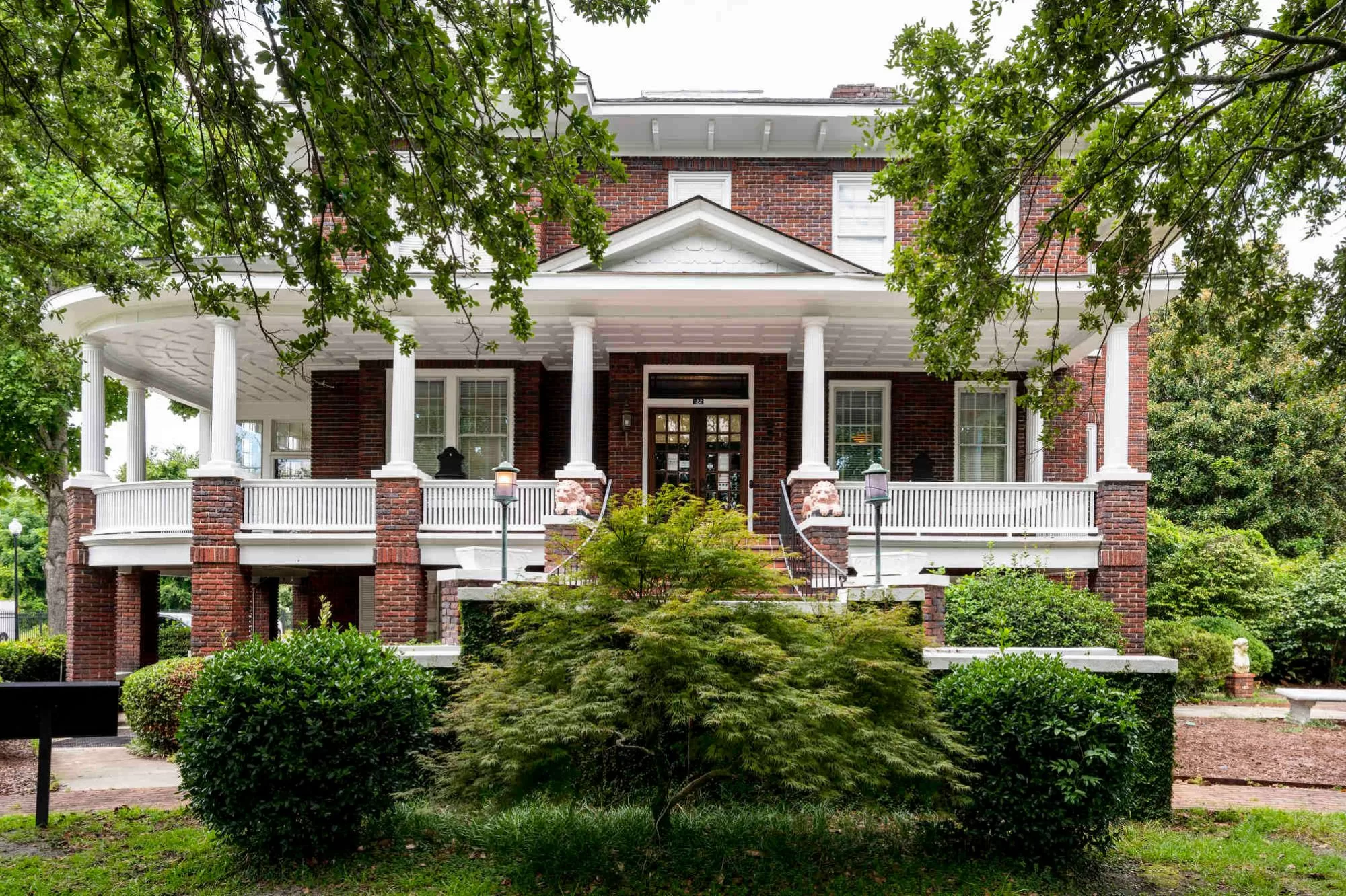
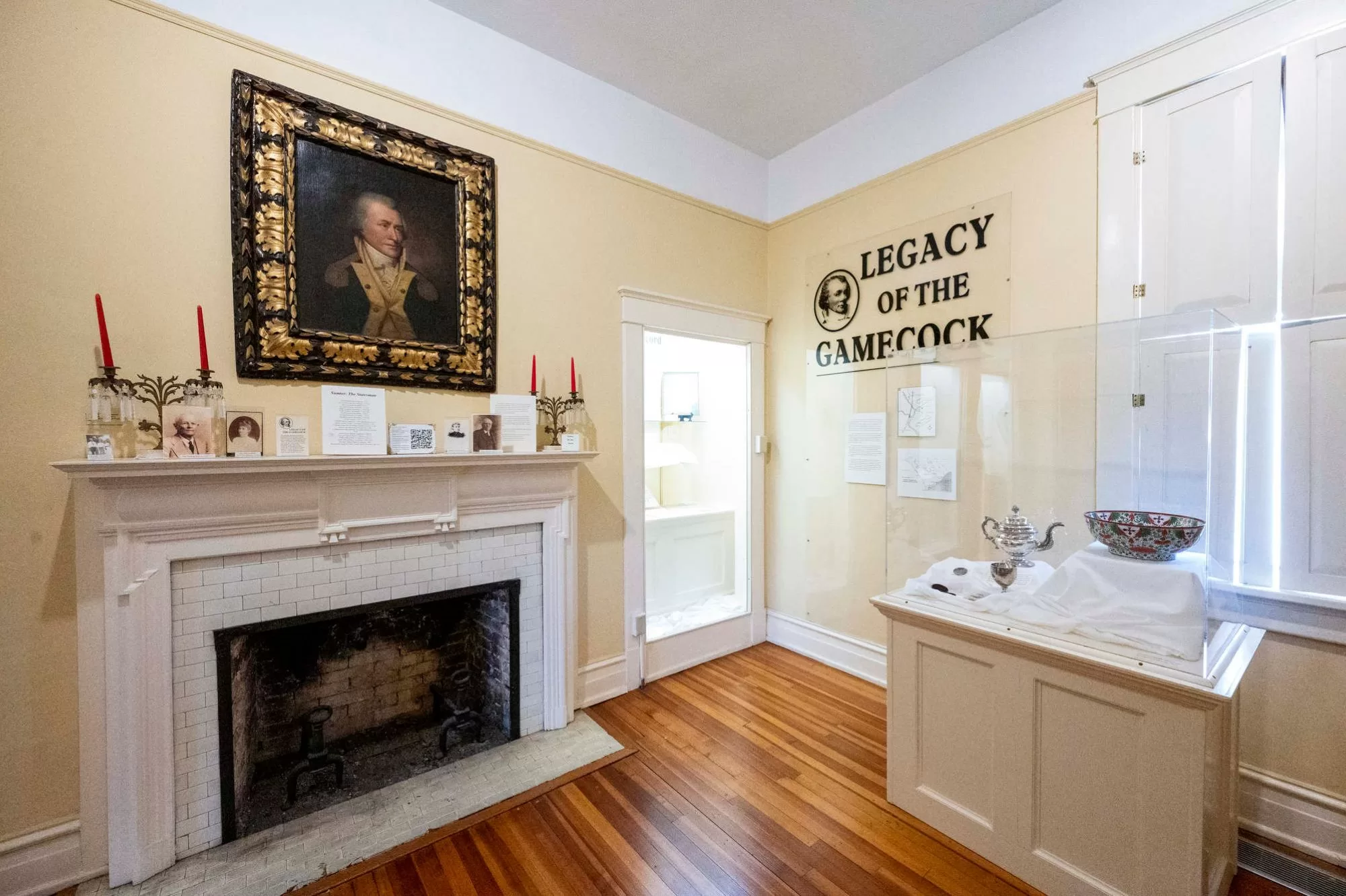
No. 3
Sumter County Museum
The Sumter County Museum is almost hidden inside a gorgeous 1900s brick house. The grand staircase leading to the covered veranda wrapping around the house tricks you into thinking it’s anything but a museum. But it’s the best place to visit in Sumter to learn about the town’s namesake.
The museum’s exhibits are spread throughout the parlor and former bedrooms. A room on the first floor is dedicated to Thomas Sumter’s history. Read about his Revolutionary War exploits and see a list of battles he led.
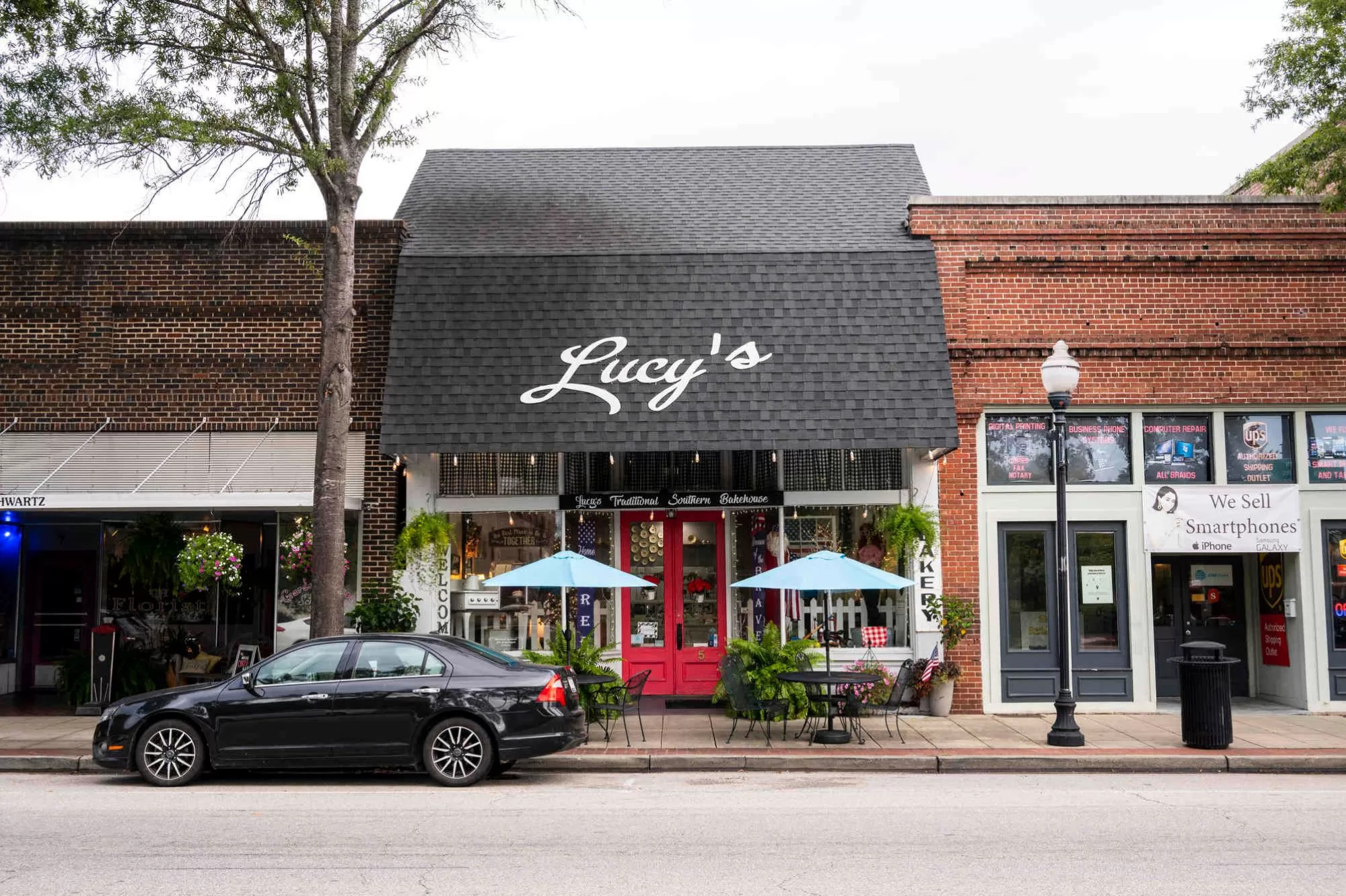
Destination
Manning, SC
The state commission selected a sight for a new town when Clarendon County was created from the southern portion of Claremont County in 1855. Manning was named after the previous governor, John Lawrence Manning. The young town was burned during the Civil War only a few days before General Robert E. Lee surrendered at Appomattox Courthouse.
But, the town rebounded as a railroad, timber, and agriculture hub. When Interstate 95 was built in the 1960s and 1970s, it became a popular stop for motorists between New York and Florida.
Get something to eat at The Orchard Café or Mill Street Grill. Explore the shops around the courthouse square. It’s a lovely, small town to explore.
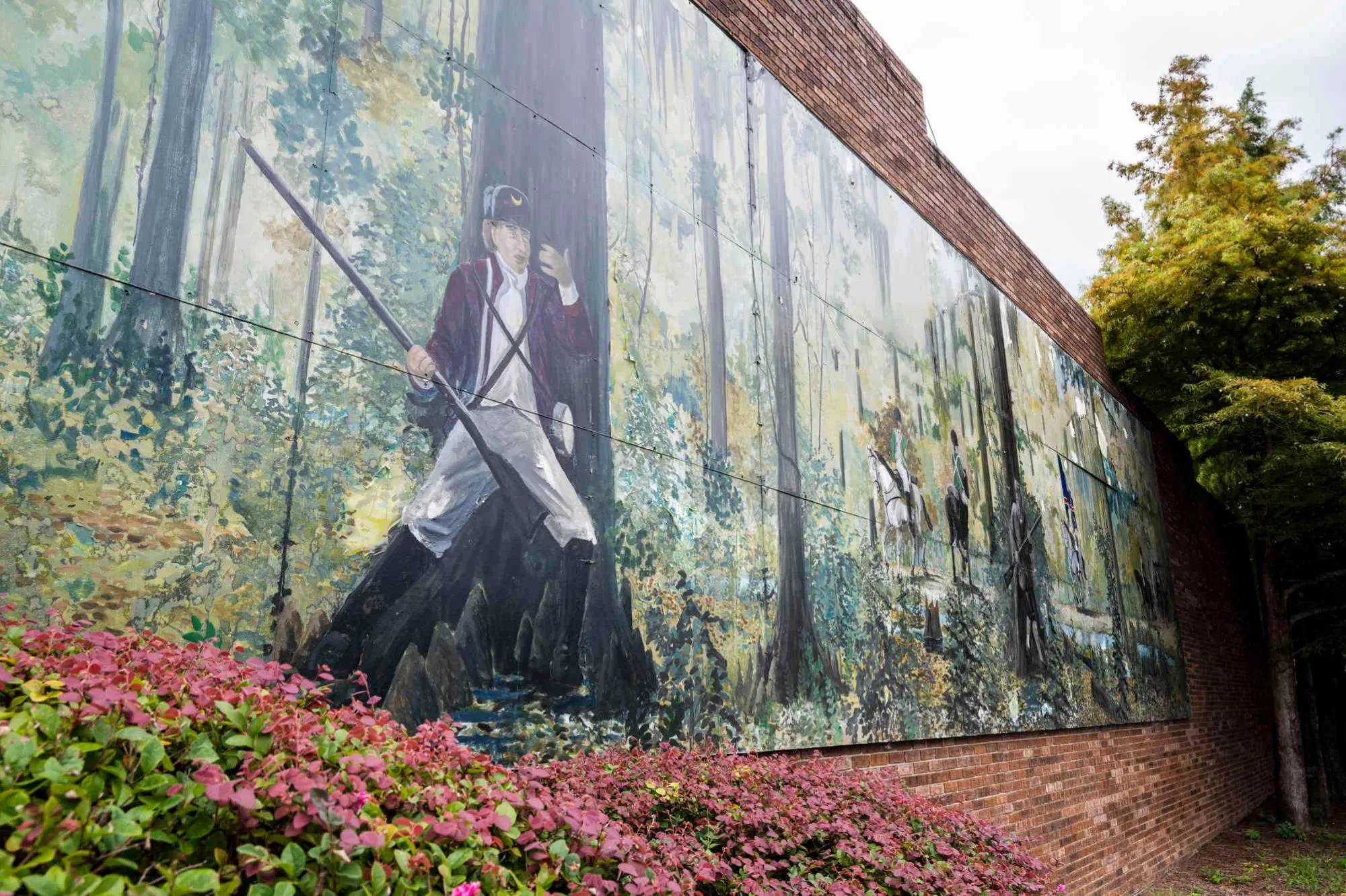
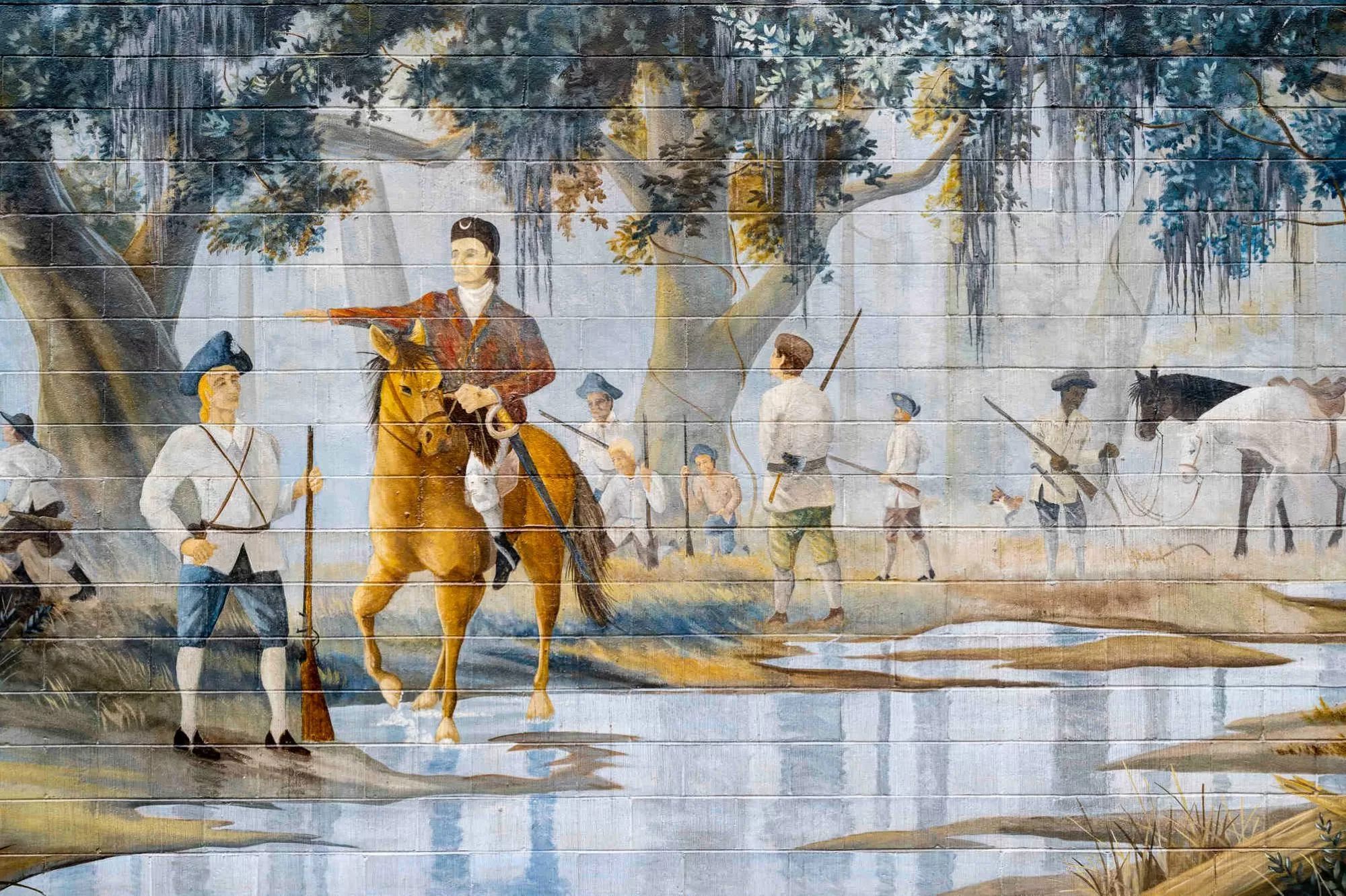
No. 4
Swamp Fox Murals Trail
The Swamp Fox Murals Trail is a fascinating collection of over 30 murals depicting Francis Marion’s – a.k.a. Swamp Fox – exploits in the Revolutionary War. The murals span from ten feet to a whopping 100 feet on the sides of buildings in Turbeville, Paxville, Summerton, and Manning.
You’ll want to find a place to park and study the incredible details of the murals. Learn about the scenes depicted and the artists at Clarendon Murals.

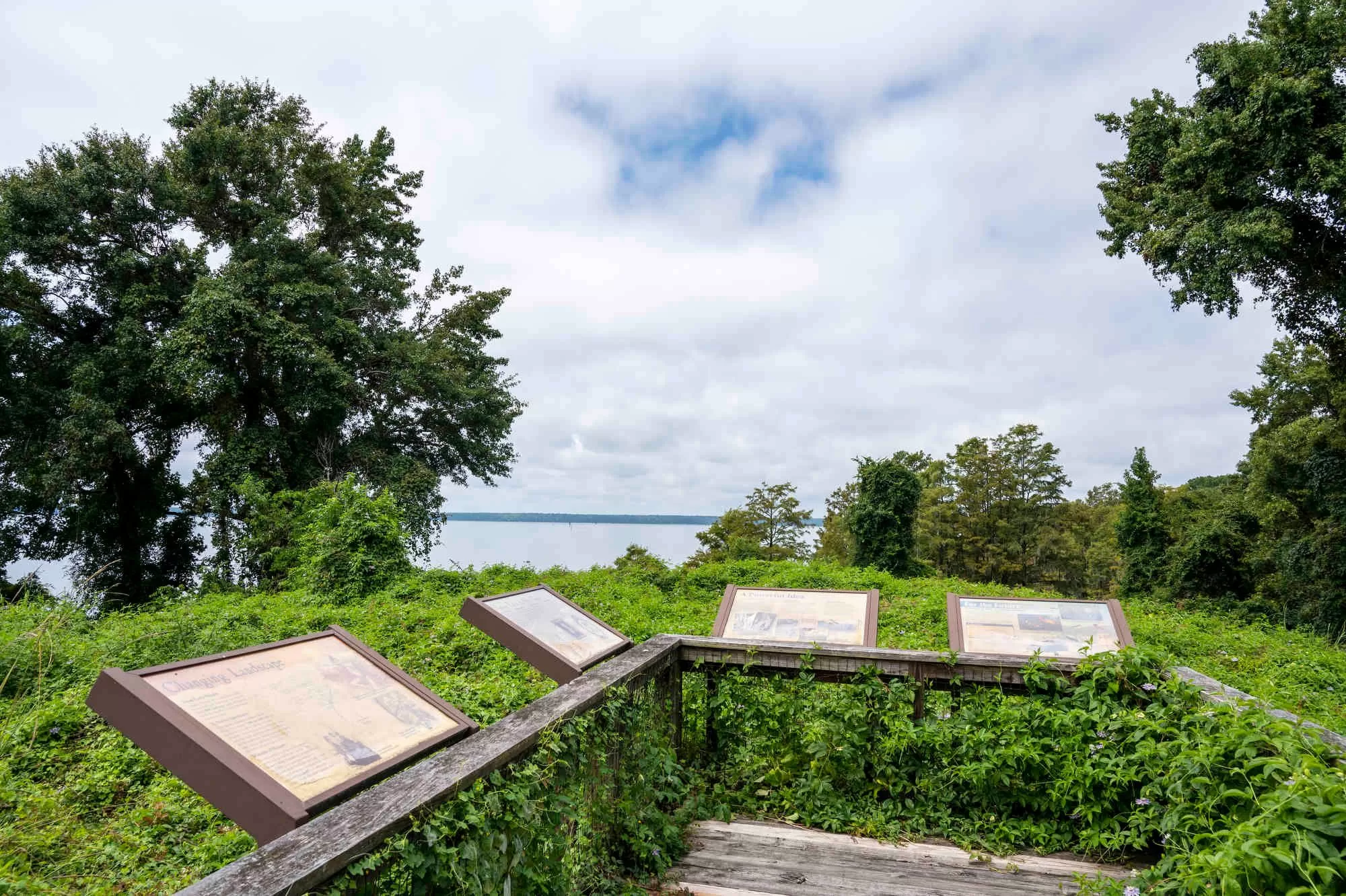
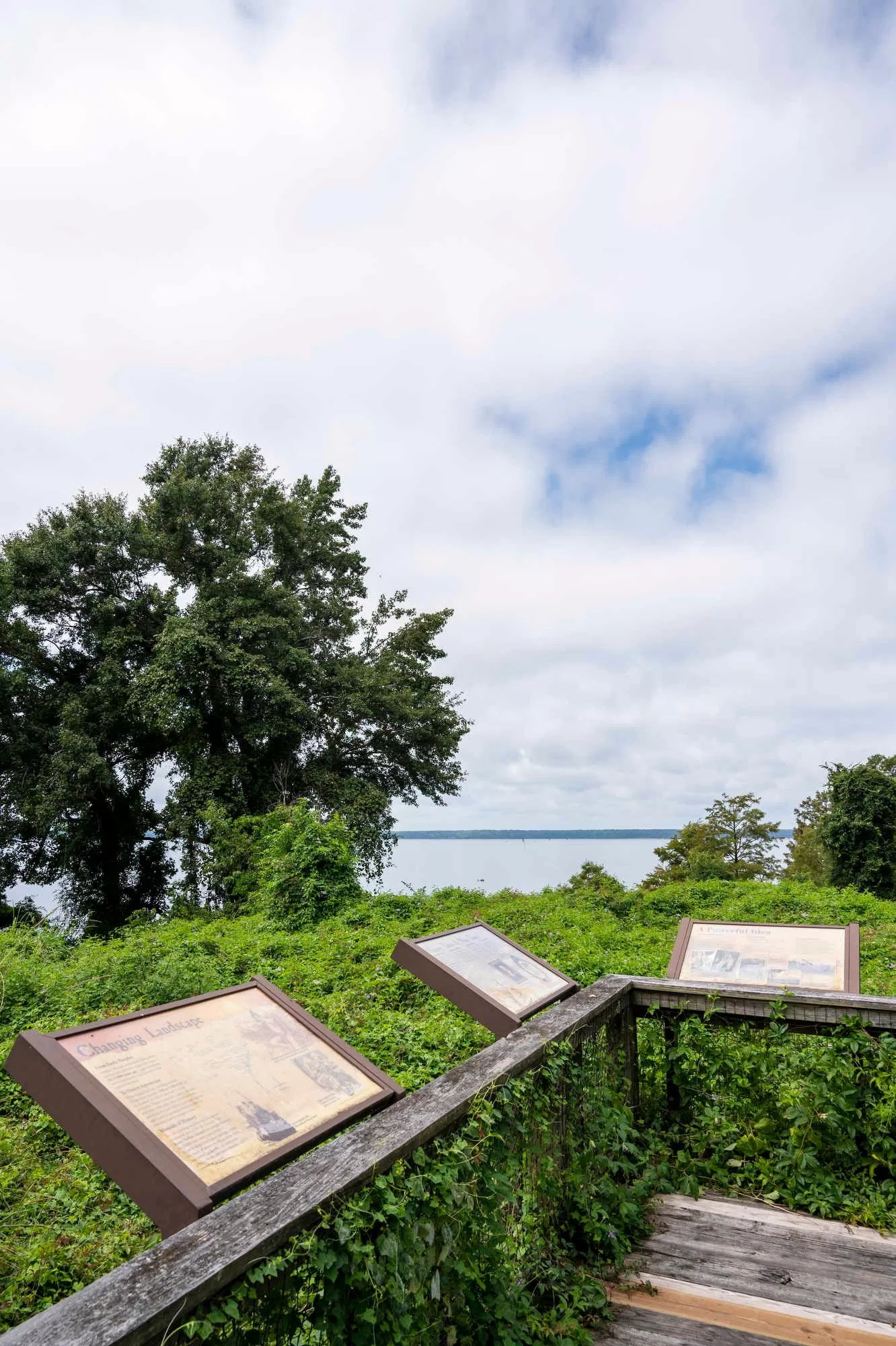
No. 5
Santee Indian Mound and Fort Watson
After the Fall of Charleston in May 1780 and the disastrous Battle of Camden in August, the British secured South Carolina. They built a series of strategic outposts between Charleston and Camden for communications and supplies.
Colonel John Watson supervised the construction of a fort atop a 1,000-year-old Santee Indian Mound overlooked the Santee River. It was a formidable location with clear sightlines 40 feet above the surrounding landscaping.
In February 1781, General Thomas Sumter unsuccessfully tried to capture Fort Watson. A few months later, General Francis Marion began a prolonged siege. Major Hezekiah Maham developed a novel idea to counter the strong British location. He built a wooden tower near the fort, giving his soldiers a higher elevation.
Marion captured Fort Watson on April 23, 1781. It was the first important British garrison captured in South Carolina. But it would not be the last.
The Fort Watson site is in Santee National Wildlife Refuge, about a ten-minute drive from Interstate 95. Nothing remains of the fort. But fortunately, the Santee Indian Mound remains. It’s a five-minute walk from parking spaces in the refuge. You can climb a wooden staircase to the top of the mound for a sweeping view of Lake Marion.
Did You Know?
The Maham Tower was built again a few months later at the Battle of Ninety Six. A smaller replica of the tower stands near the Star Fort at Ninety Six National Historic Site.
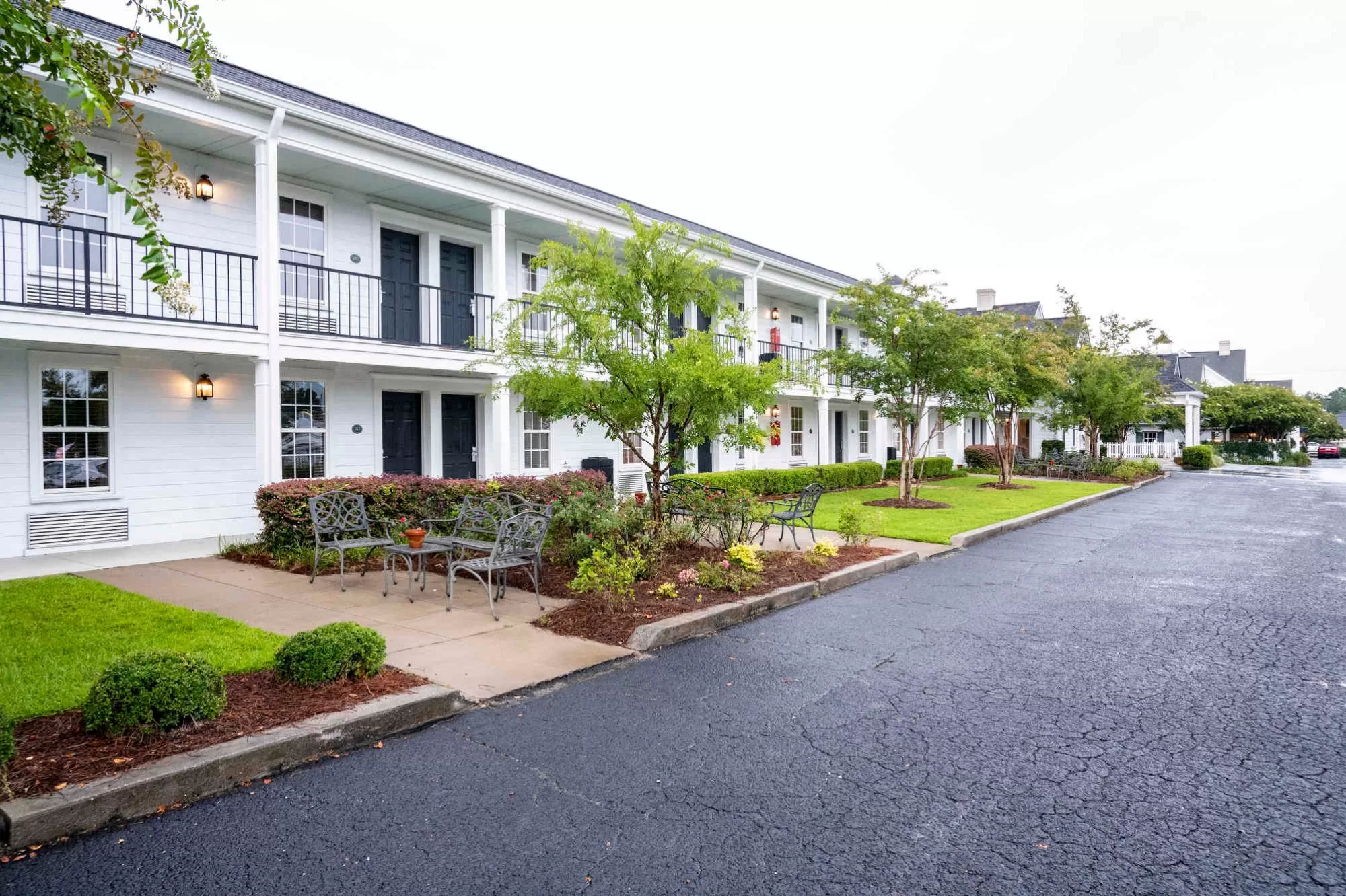
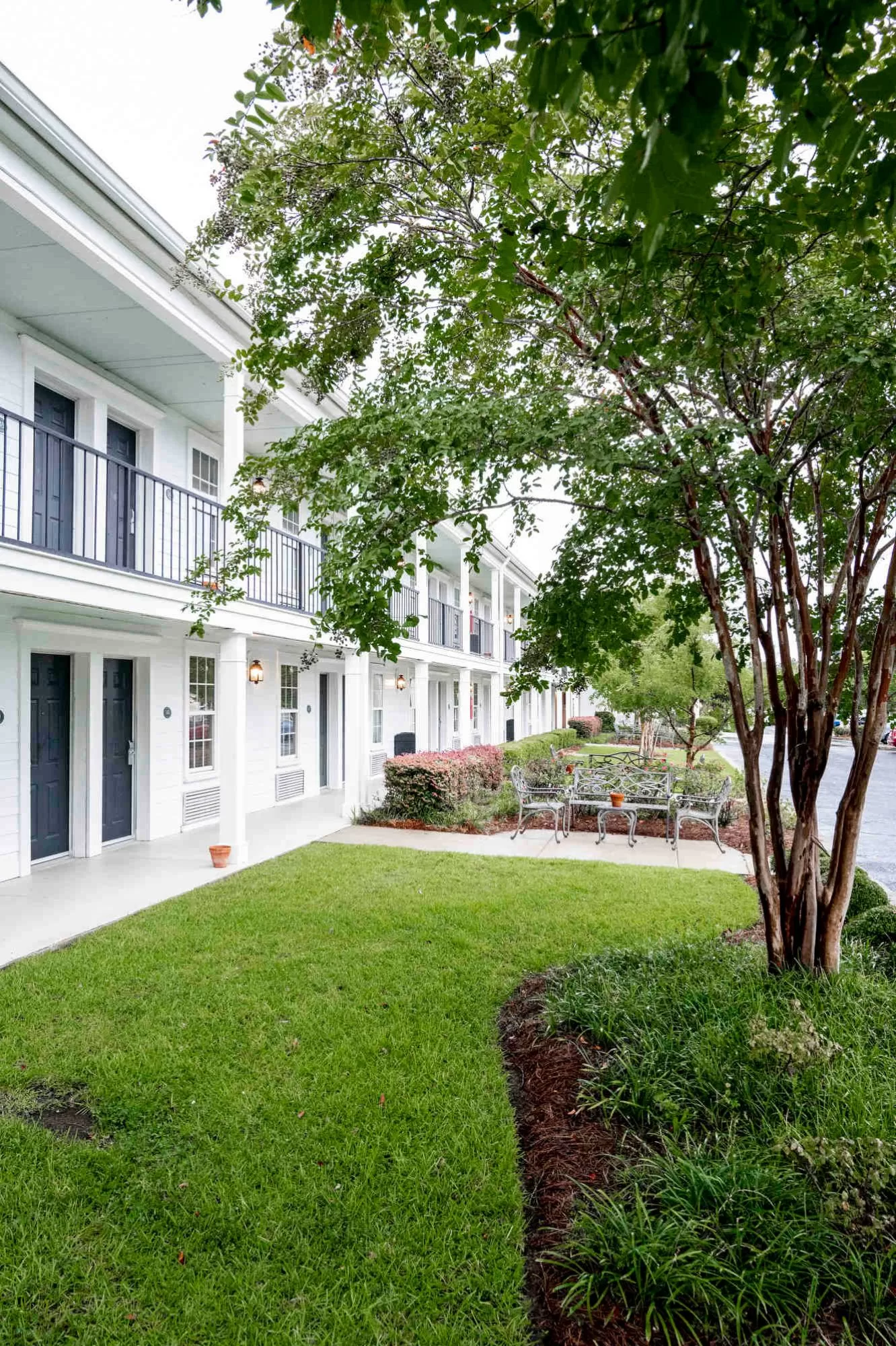
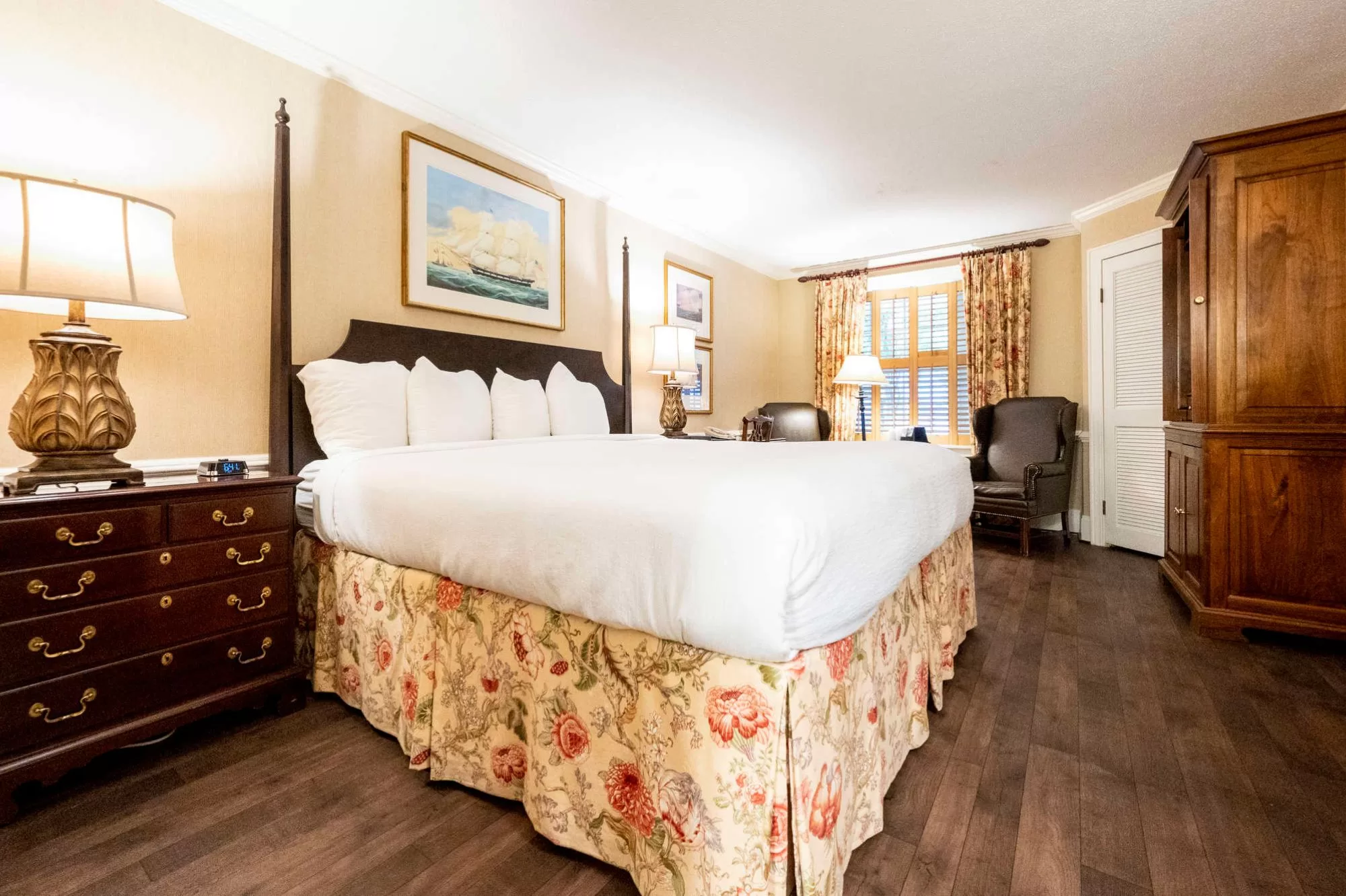
Destination
Santee, SC
Santee developed into a town when U.S. Highway 301 was built in 1932. By the late 1940s, the highway connected Baltimore to Tampa, becoming the primary route between New York and Florida. A two-lane bridge was built across Lake Marion when it was impounded in 1939.
Interstate 95 was built in this area from 1962 until 1968. The final piece was the multi-lane bridge across Lake Marion parallel to the original two-lane bridge. Once completed, Santee became a popular overnight tourist stop between New York and Florida.
Today, Santee is a typical interstate wayside with chain hotels, fast food eateries, and gas stations. The Coast Exxon Station is the must-visit place in town. Shop over 40 flavors of fresh fudge made daily, along with typical convenience store items.
Where to Stay in Santee, SC
Santee has been an overnight stop along I-95 since it was built in the 1960s. You’ll find plenty of hotels, but there is one place every road-tripper needs to stay at least once.
Clark’s Inn and Restaurant started in 1946 when WWII veteran William Clark bought the old bus station. In 1971, the current restaurant was built shortly after I-95 was completed through Santee. Over the next few years, he added 75 guest rooms in a roadside motel style.
But it’s a chic roadside motel. Guest rooms feature boutique hotel-style furnishings. There is an outdoor swimming pool. And you can sit on the covered patio or benches on the lawn and share stories with your neighbors.
Clark’s Inn and Restaurant is now operated by Winfield and Edward Clark, the founder’s sons. The hotel and restaurant are managed by long-time family friend Kittie Collier.
Book a room at https://clarksinnandrestaurant.com
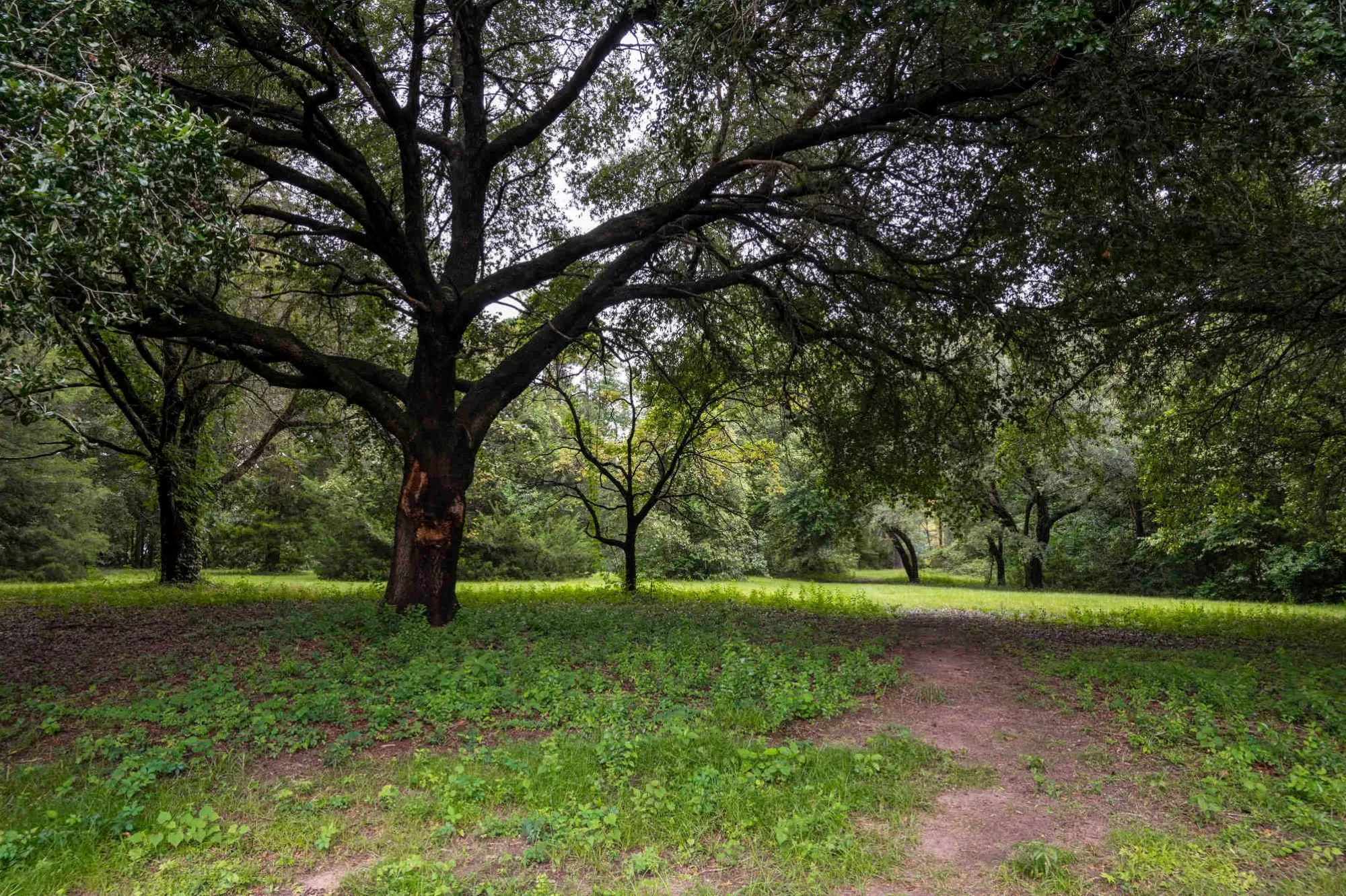
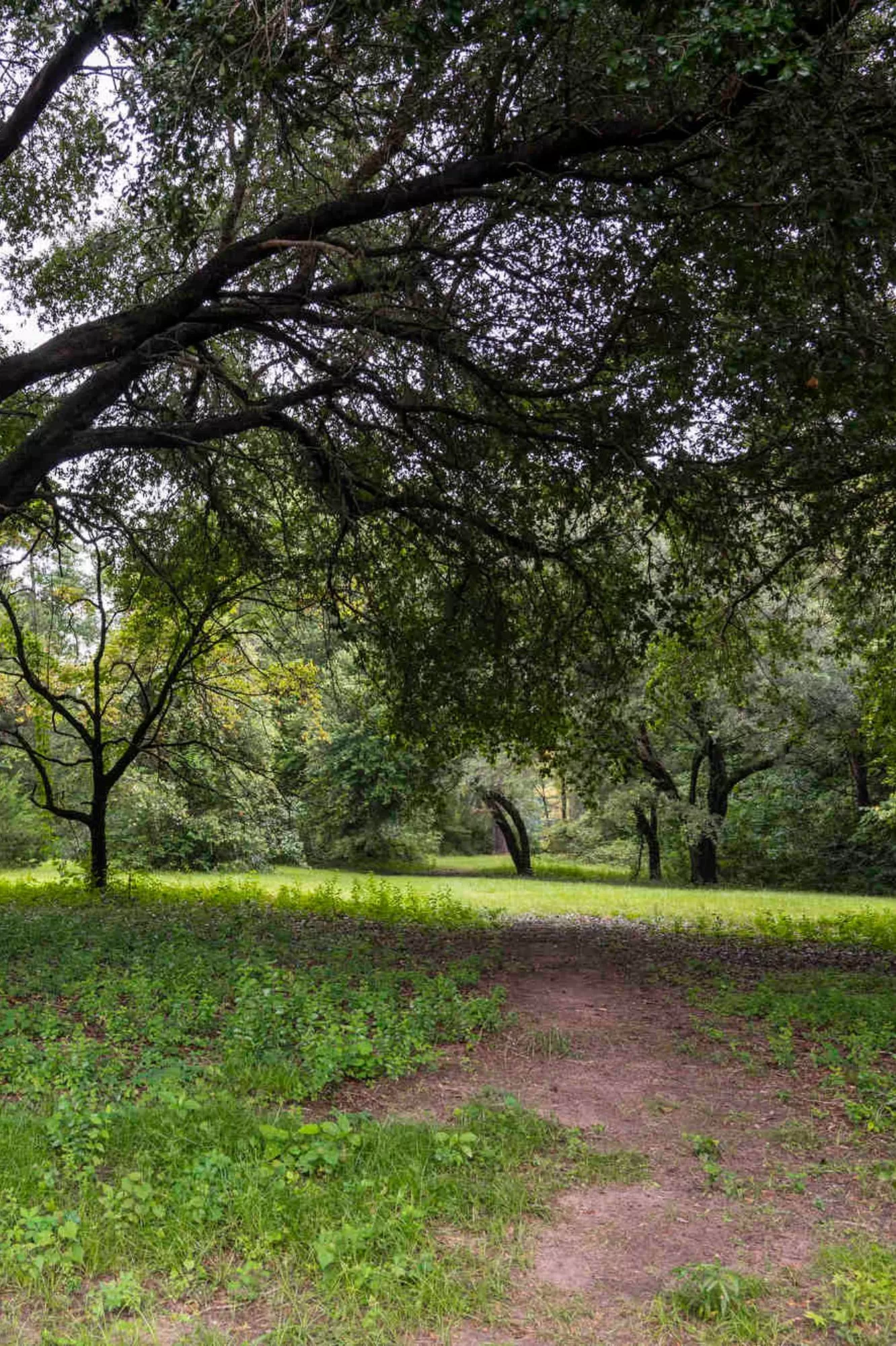
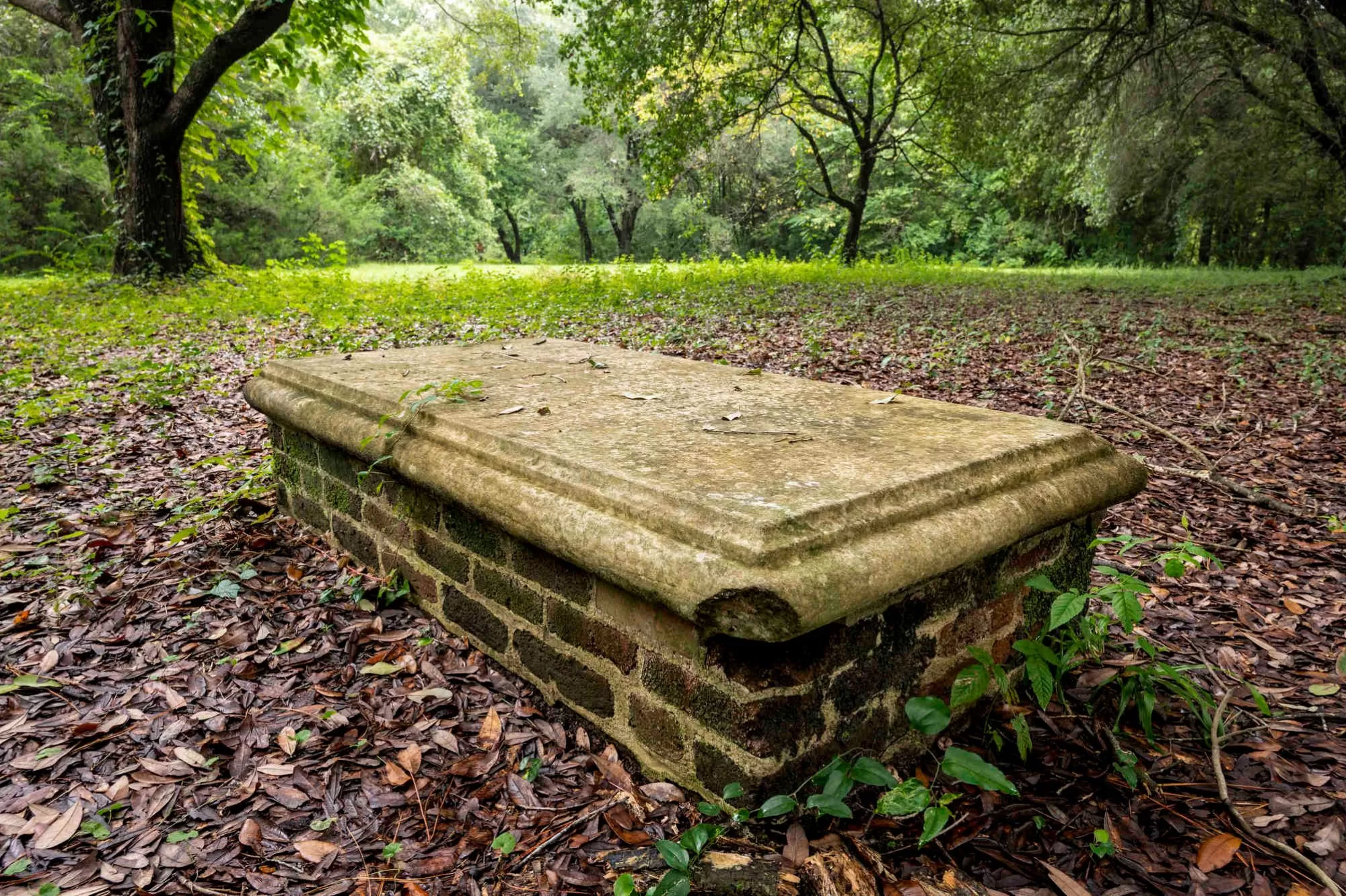
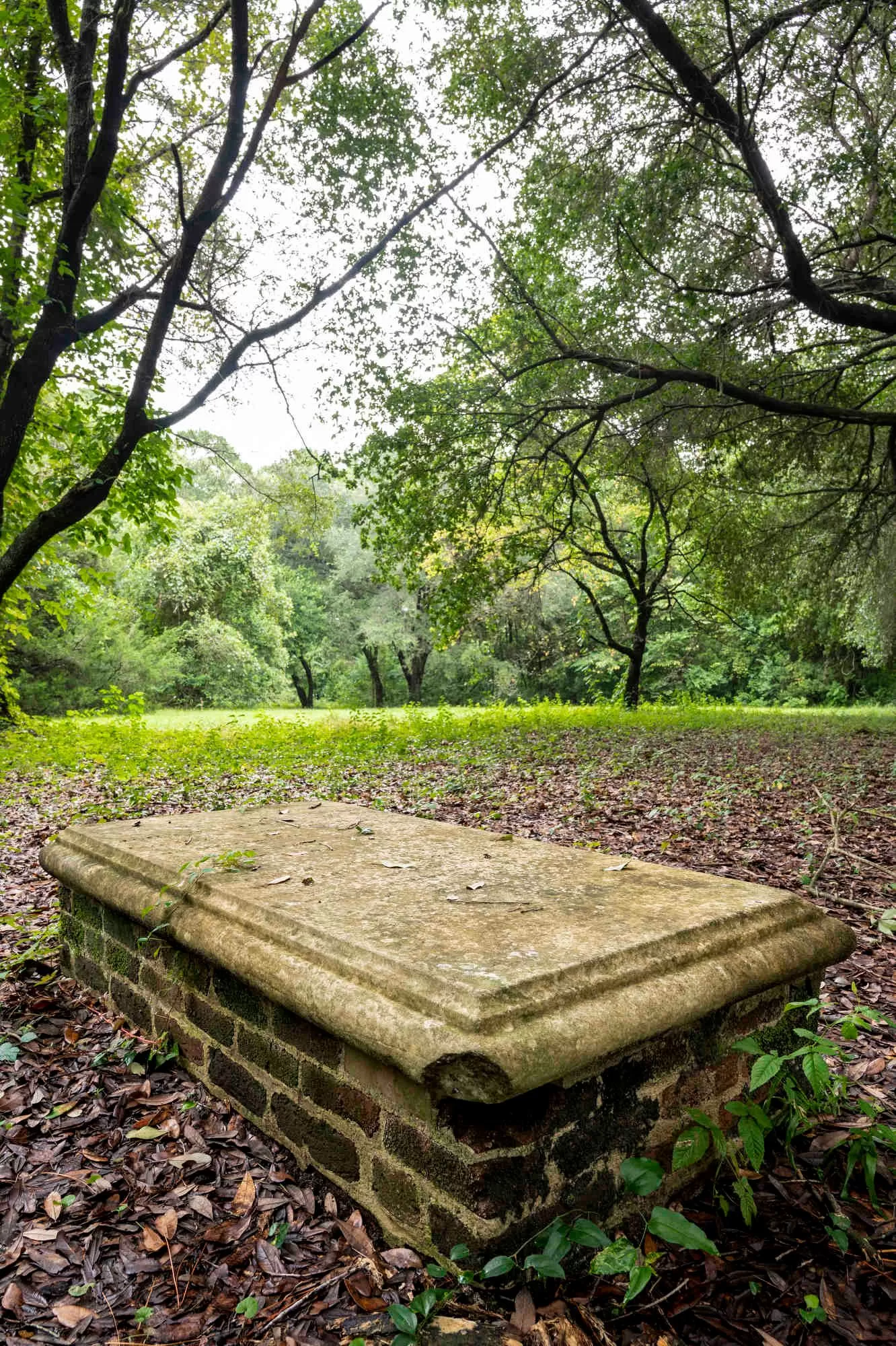
No. 6
Eutaw Spring Battlefield
By the end of 1780, the British controlled Charleston, Camden, and a string of strategic outposts in between. But less than a year later, almost all those outposts were abandoned or captured. General Francis Marion captured Fort Watson in April 1781, and the British evacuated Ninety Six in June after General Nathaniel Greene’s siege.
The remnants of the British forces outside Charleston – about 2,000 Regulars and Loyalists – encamped at Wantoot Plantation near Eutaw Springs.
Greene caught up with them on September 8, 1781. The Battle of Eutaw Springs was chaotic and disorganized. Starving and weary, Greene’s army chased the British from their camp and immediately turned to looting everything left behind – including the rum. Recovering from their retreat, the British soldiers began picking off the Patriots one at a time.
Although Greene won a tactical victory, it was another blow to his beleaguered army. It was the last major battle of the Revolutionary War in South Carolina.
Walk through the small battlefield and read the interpretive signs to learn more about the battle. Most of the battlefield was lost when Lake Marion was impounded in 1939. A short trail leads to the lake’s edge, where you can see where Wantoot Plantation once stood.
The most interesting thing to see in the park is Major John Majoribanks’ gravesite. The British soldier was killed during the Battle of Eutaw Springs and buried on the battlefield. When Lake Marion was built, his gravesite was moved to the current location.
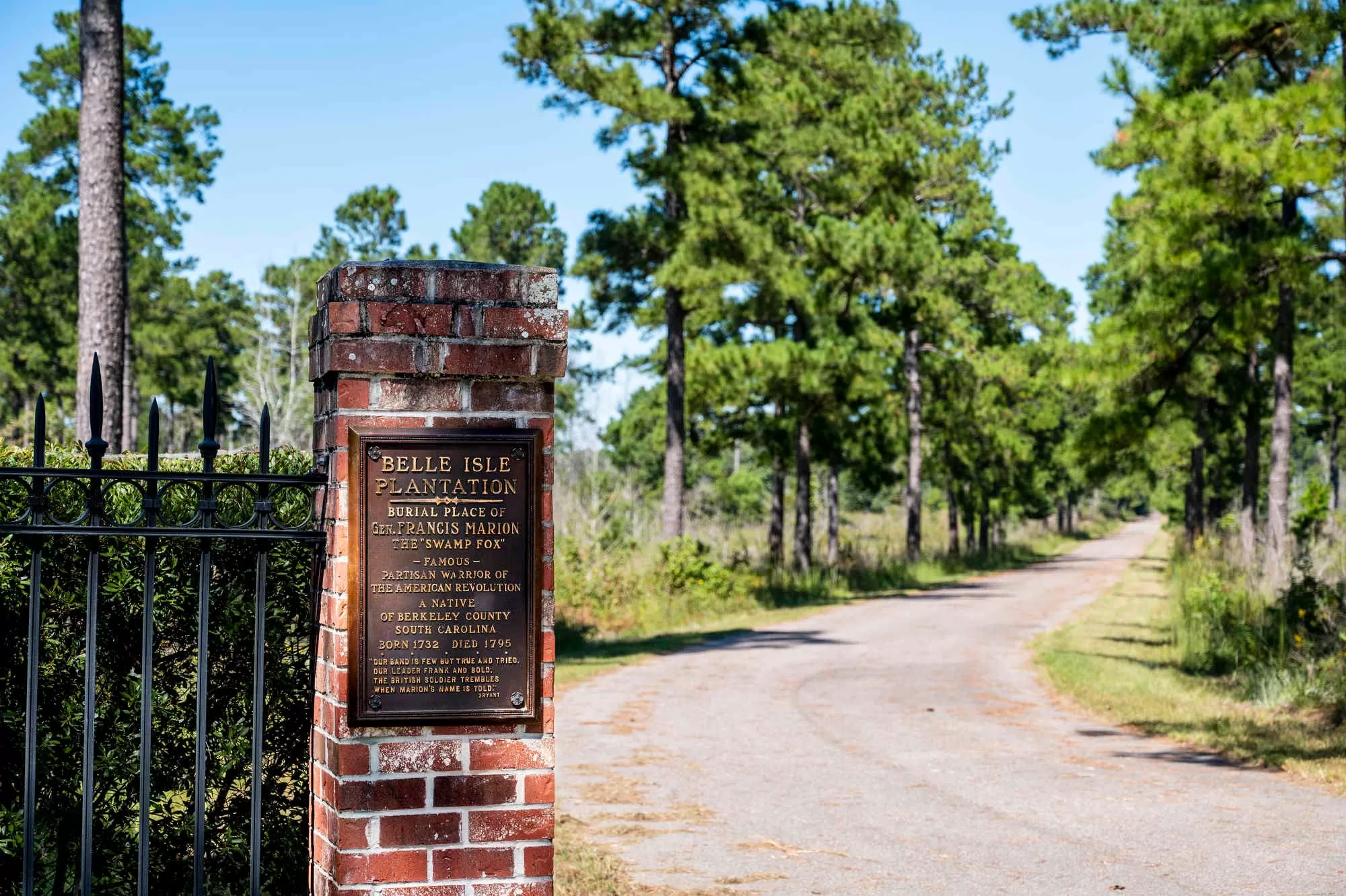
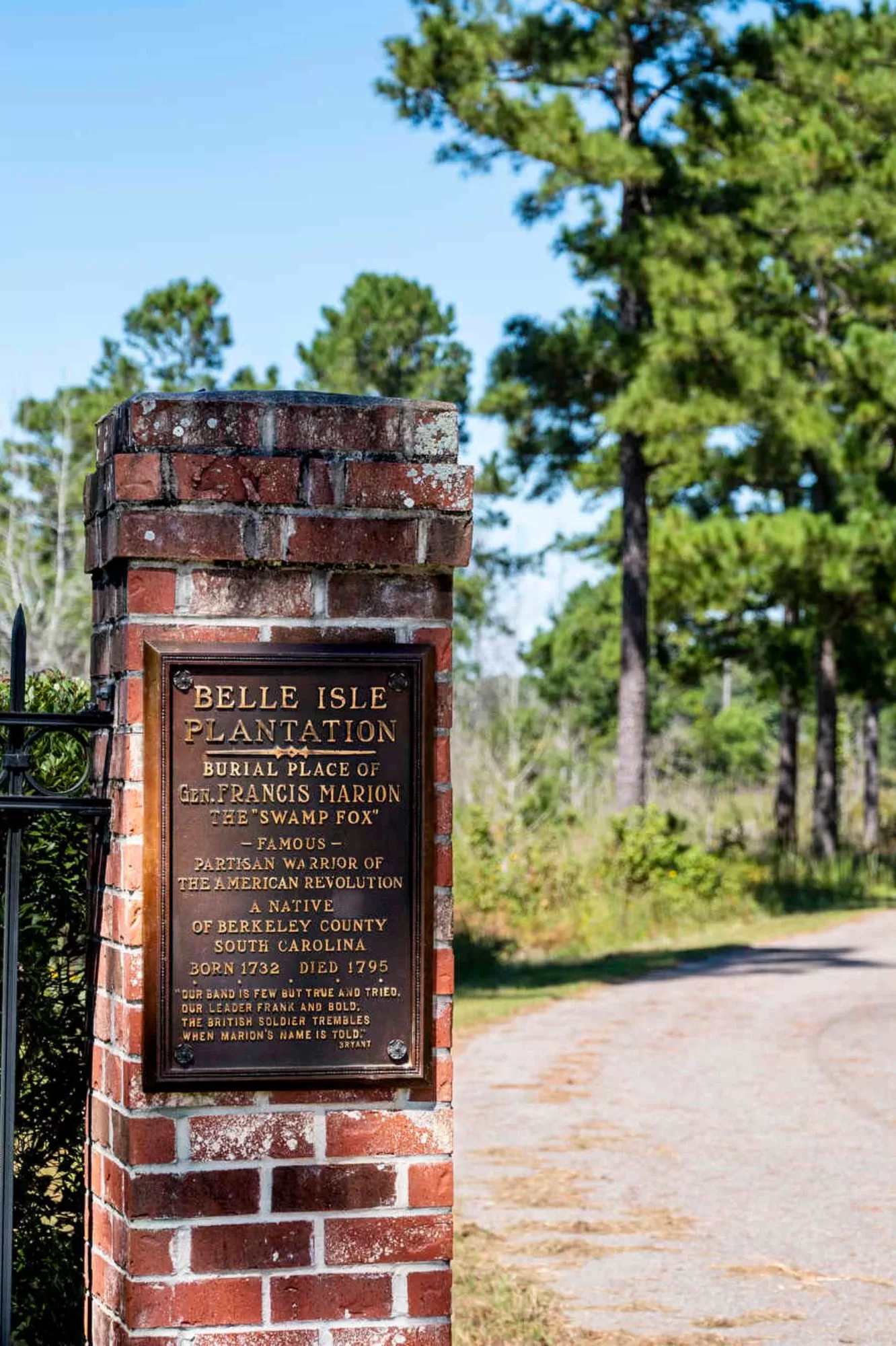


No. 7
Francis Marion Tomb
Francis Marion was born in 1732. He was the son of French Huguenot immigrants who traveled to the South Carolina Colony around 1700. His first military experience came in 1761 during the French and Indian War when he served in the South Carolina Militia fighting for Great Britain.
But when the Revolutionary War started, he was commissioned as a captain in the Continental Army’s 2nd South Carolina Regiment, participating in the Battle of Sullivan’s Island.
Marion avoided capture at the Fall of Charleston in 1780. When the disastrous Battle of Camden left no Continental Army soldiers in the state, Marion began recruiting militiamen. Over the next two years, he earned his moniker “The Swamp Fox” for his uncanny ability to ambush British units and quickly disappear into the swamps.
After the American Revolution, Marion left politics and military service behind, returning to his plantation at Pond Bluff. When he died in 1795, he was buried in a family cemetery at nearby Belle Isle Plantation.
The cemetery is open to the public. It’s located at the end of a half-mile paved road near St. Stephen.


No. 8
Biggin Church
The first brick church was completed on this site in 1715, about thirty years after a settlement developed by French Huguenot immigrants. The church was destroyed by a forest fire in 1755. In 1767, a stuccoed brick church was built.
British forces captured Moncks Corner during the Siege of Charleston. A permanent garrison was established at the earthen Fort Fair Lawn and Colleton Mansion. Biggin Church was garrisoned and used as a supply depot.
Lieutenant Colonel James Coates commanded the British outposts in Moncks Corner. In July 1781, General Thomas Sumter, reinforced by Henry Lee and Francis Marion, launched an attack. Coates abandoned the fort and retreated to Biggin Church. In the middle of the night, Coates set fire to the church to prevent the Patriots from capturing supplies and escaped capture.
The ruins you see when you visit today are from the third brick church on the site. Built after the Revolutionary War, it was destroyed by a forest fire in the 1880s.
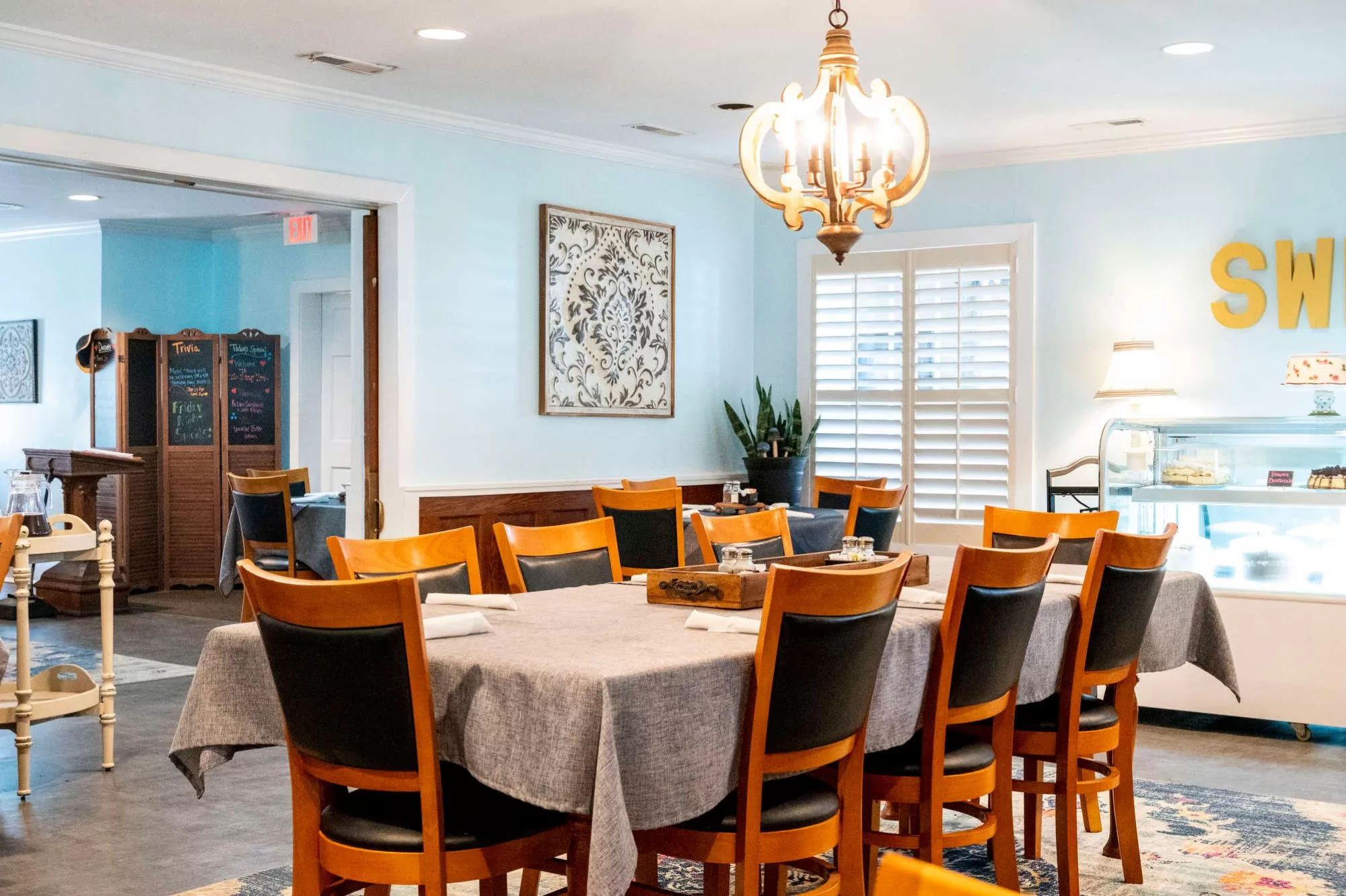
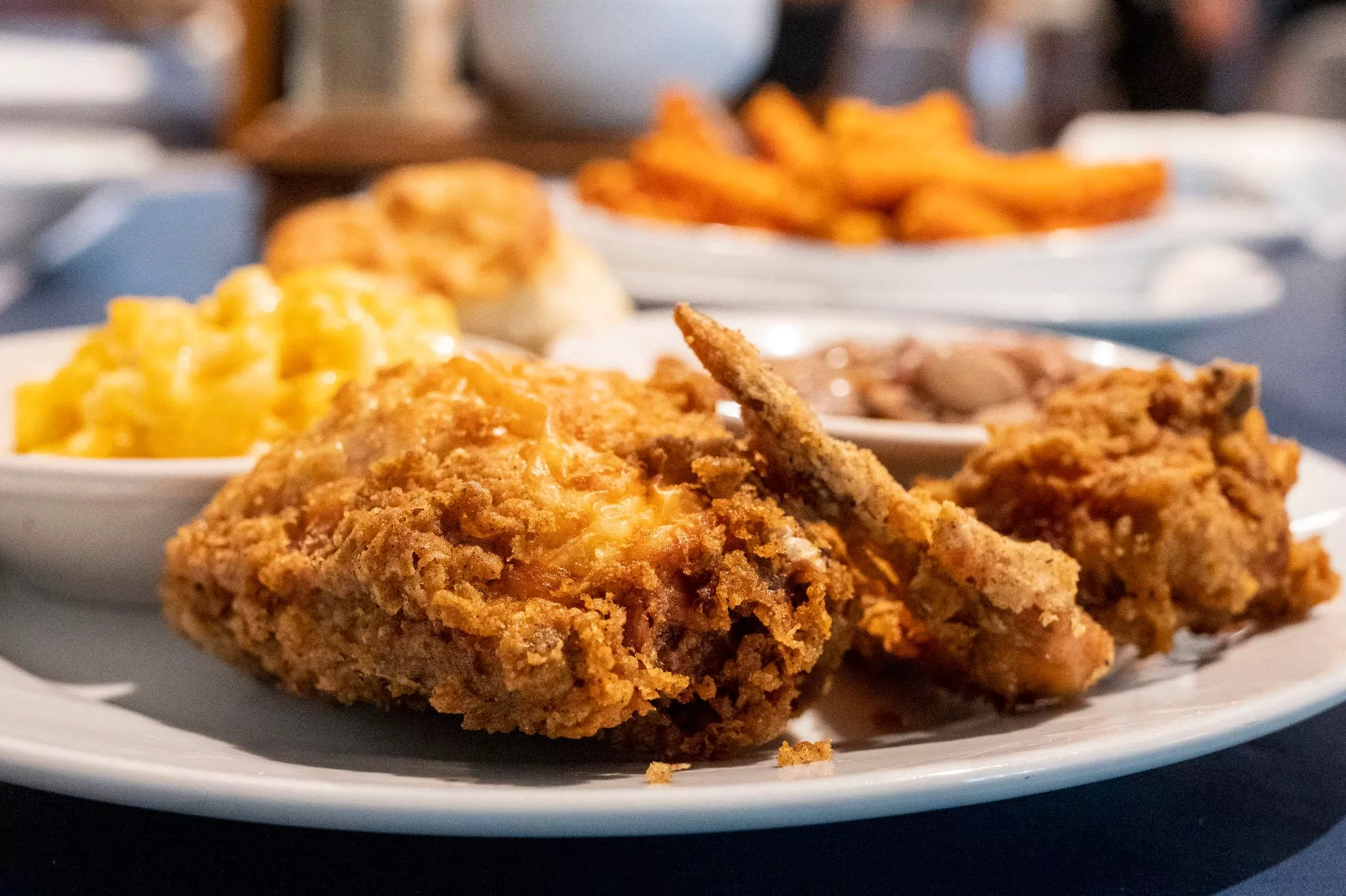
Destination
Moncks Corner, SC
French Huguenots settled in this area after immigrating through Charleston in the 1680s. It became an important trading hub as the last navigable point on the Cooper River and a crossroads of inland trading routes.
When the town was established in 1728, it was named after local landowner Thomas Monck. By the time of the Revolutionary War, Moncks Corner was nothing more than a collection of trading posts and taverns. But it was a vital link between Charleston and inland towns.
And that made it a vital target when the British arrived in 1780.
Patriot General Isaac Huger was ordered to protect Moncks Corner with 500 soldiers. After British General Sir Henry Clinton laid siege to Charleston, communications and reinforcements continued to arrive on the Cooper River via Moncks Corner.
Clinton sent Lieutenant Colonel James Webster with 1,400 men and a detachment of Lieutenant Colonel Banastre Tarleton’s dragoons to capture the trade town. On April 14, 1780, the Battle of Moncks Corner was an effortless British victory. Catching Huger off guard, the British seized 185 horses, wagon loads of arms and gunpowder, and secured Moncks Corner.
Get something to eat at The Barony House, a local favorite that recently changed ownership. When Michelle Hopkins bought the restaurant from Van High, she added a passion for pastries to the country food menu. The most popular menu item is a meat and three – a meat of the day and three sides like collards, mac and cheese, and fresh vegetables. But save room for dessert because you’ll want to try a slice of Michelle’s delicious cakes and pies.
Breck’s Station opened in North Charleston in 1961 and then opened a new location in Moncks Corner in 2016. The locally-owned restaurant is known for its giant steaks, but you can also order Lowcountry seafood, burgers, and sandwiches. If you’re feeling peckish when you arrive, order some of their homemade onion rings with a thick slice of onion and crunchy breading.
Where to Stay in Moncks Corner, SC
Moncks Corner lacks options for overnight lodging. Fortunately, Moncks Corner Inn is a surprisingly nice hotel.
The large outdoor swimming pool has a peaceful forested backdrop in a corner of the parking lot. The clean, spacious rooms featured decent furnishings. It’s a great place to spend the night at the end of a long road trip. Book now with Booking.com or Expedia.com
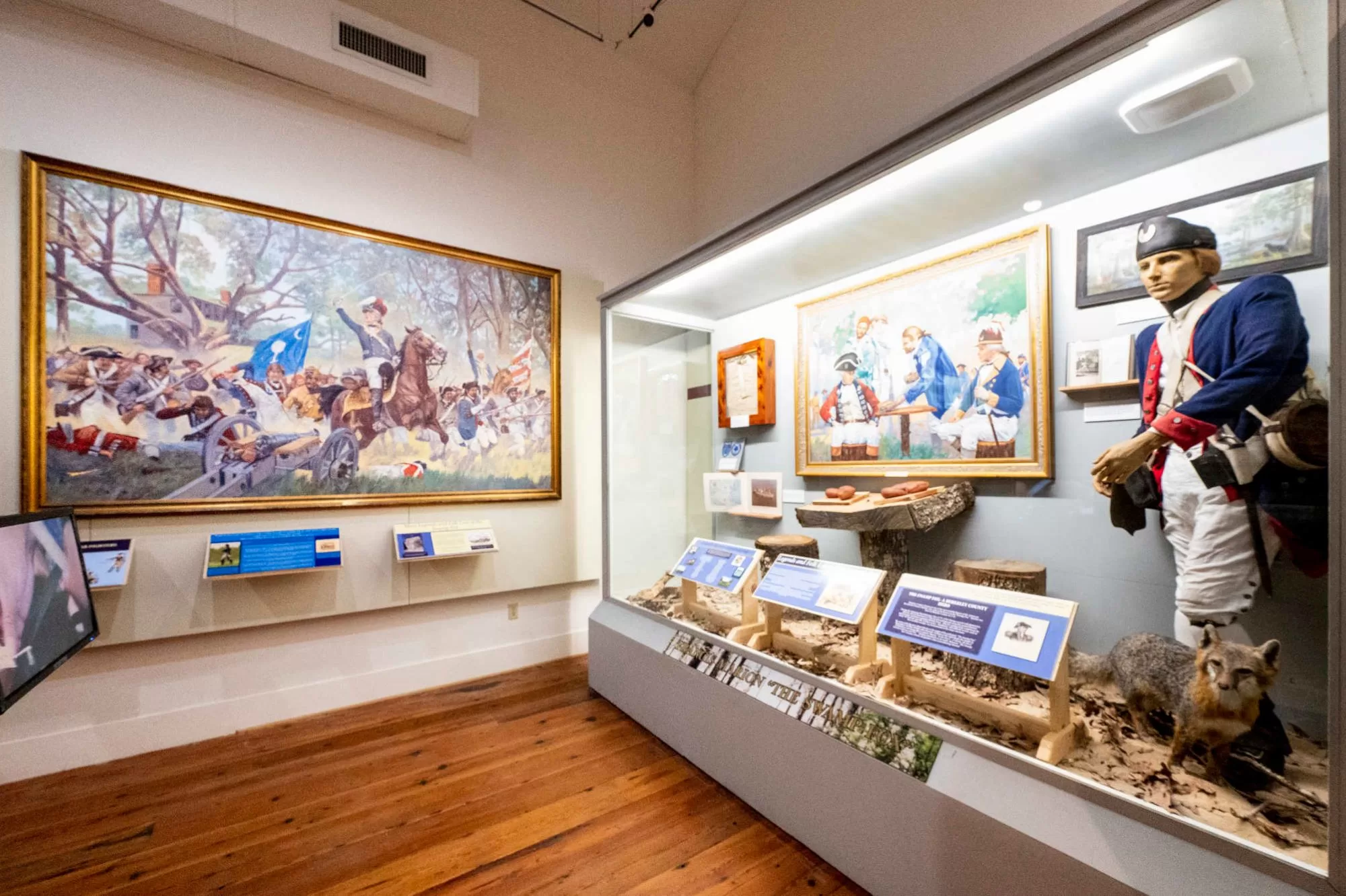

No. 9
Berkeley County Museum
In 1786, the South Carolina General Assembly chartered a company to build an inland canal between the Cooper River and Santee River, connecting Charleston to Columbia by water. The canal was built from 1793 until 1800. It operated for nearly fifty years. But poor design, drought, and the railroad ended the state’s charter, and by 1865, the canal was abandoned.
Old Santee Canal Park was established to preserve one of the earliest canals built in America. The Interpretive Center features exhibits and a fascinating model depicting the canal’s construction.
But you’ll need to head over to the Berkeley County Museum for Revolutionary War history. The museum features the area’s general history, including colonial times, the American Revolution, and the building of the canals. The museum focuses on Francis Marion, Thomas Sumter, and the local battles of the war for independence.
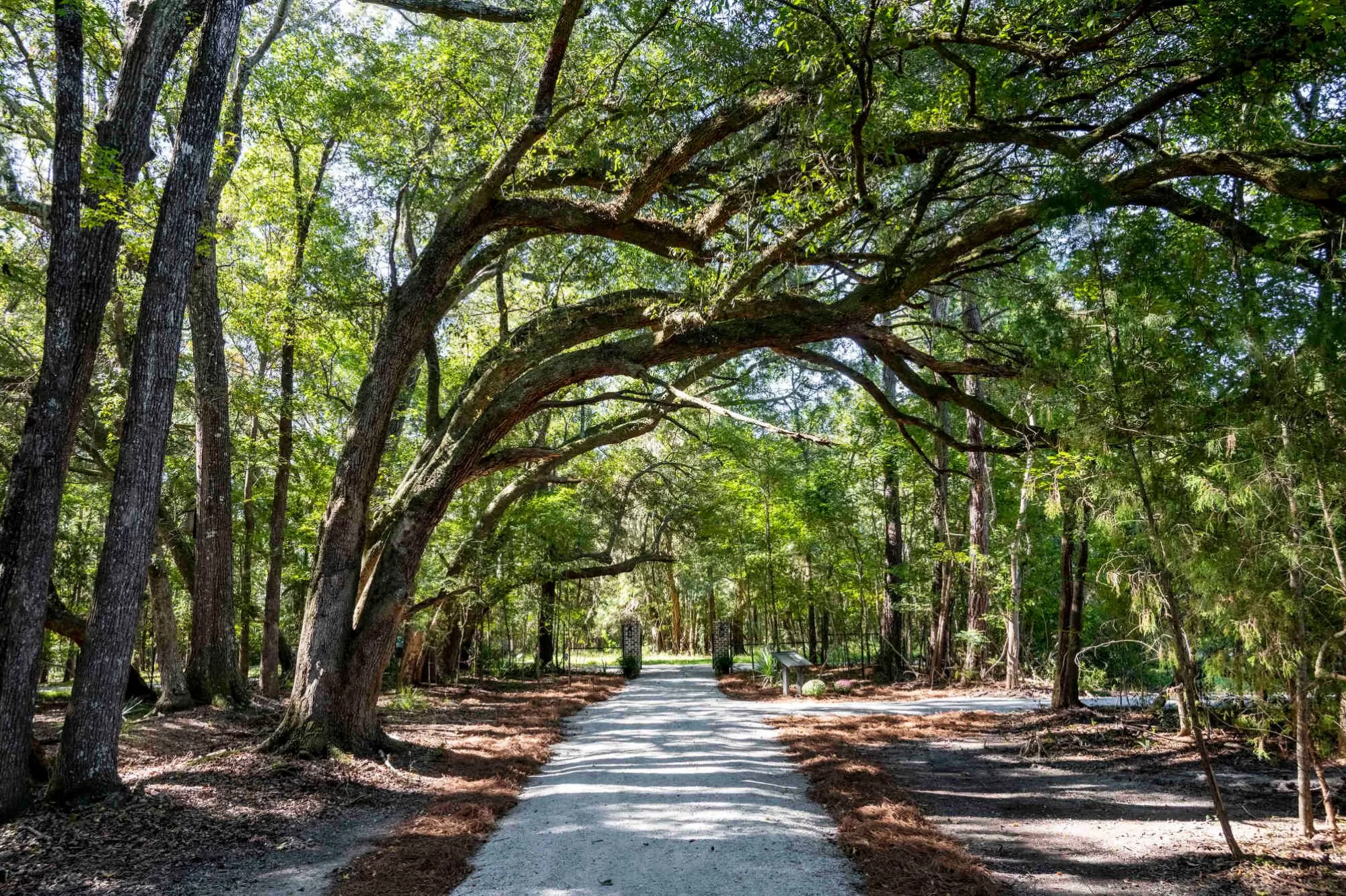
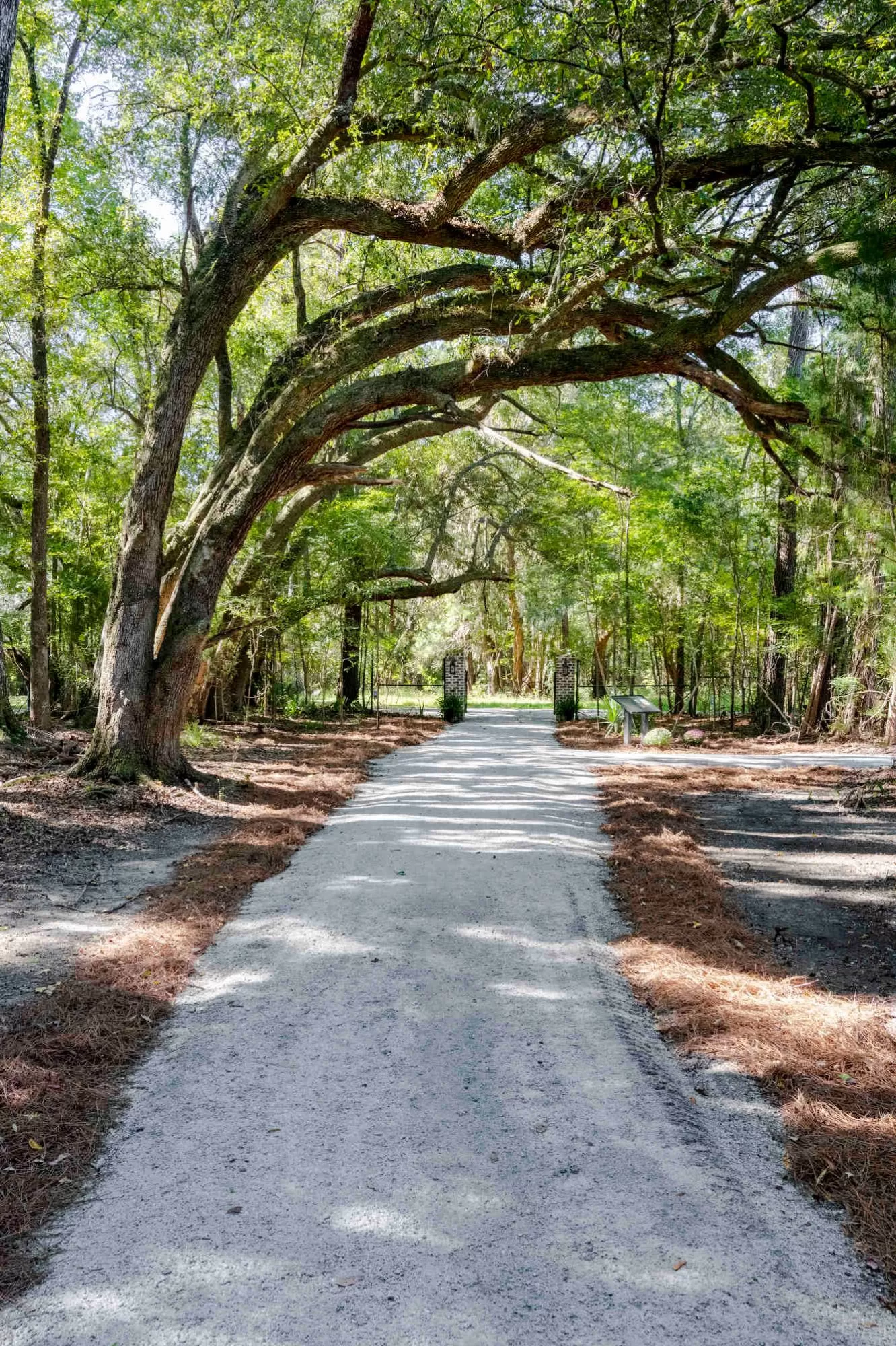
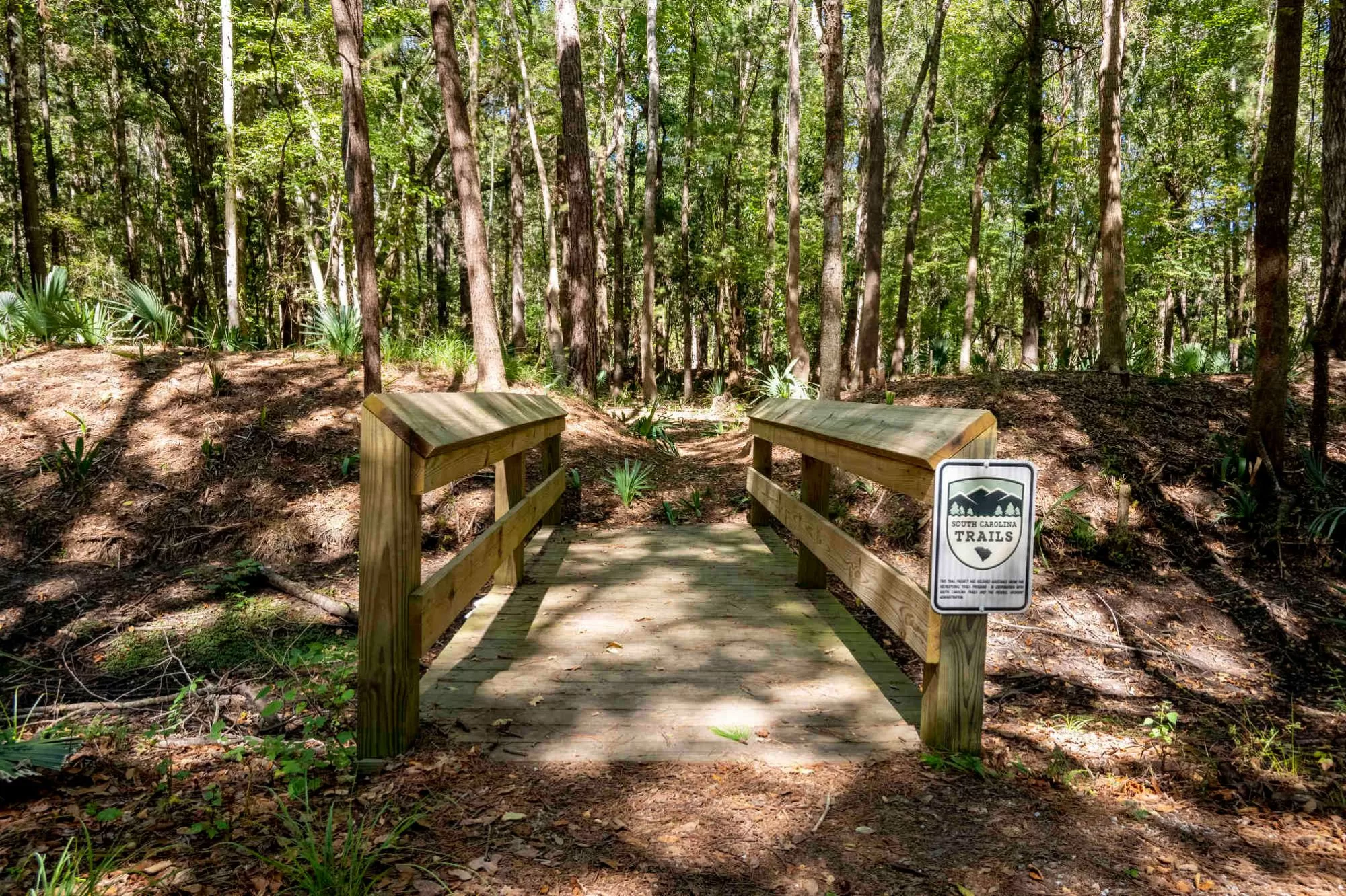
No. 10
Fort Fair Lawn
Sir John Colleton – one of the Lords Proprietors of the Carolina Colony – was given a 12,000-acre barony by King George II. From 1730 until 1740, John Colleton, the great-grandson of the original proprietor, built a large brick mansion on a portion of the barony along the Cooper River.
When Colleton died in 1777, the barony was left to his wife, Jane. After the British captured Moncks Corner and Charleston in 1780, she fled to England for protection. The British seized the abandoned mansion, turned it into a field hospital, and built an earthen fort on the property named after the house – Fort Fair Lawn.
Doug Bostick, CEO of the South Carolina Battleground Preservation Trust, described Fort Fair Lawn as “a major hub, like the Atlanta airport.” It was the most important British outpost between Charleston and Camden, protecting a vital link for communications and supplies on the Cooper River.
Throughout 1781, the tide of the war turned against the British.
After retreating from Ninety Six and Camden, Fort Fair Lawn remained one of the few British strongholds in South Carolina outside of Charleston. General Francis Marion ordered Colonels Hezekiah Maham and Isaac Shelby to attack the fort.
But Maham considered the fort too formidable to capture. Instead, they shifted their attack to the Colleton mansion. They took 76 prisoners, paroled the medical staff, and took over 300 stands of arms. Mysteriously, the mansion was burned.
A month later, the British abandoned Fort Fair Lawn. It was never captured in battle.
In 2022, the South Carolina Battlefield Preservation Trust unveiled Fort Fair Lawn – one of only two extant Revolutionary War redoubts in South Carolina. Visitors park at Old Santee Canal Park and hike 1.1 miles along a crushed gravel trail to the fort’s forested location.
Fort Fair Lawn is more preserved than restored. Towering trees grow inside and around the fort’s gentle earthen walls. A small wooden bridge crosses the two-foot-deep trench surrounding the fort. It’s a fascinating place to visit and walk in history’s footsteps.
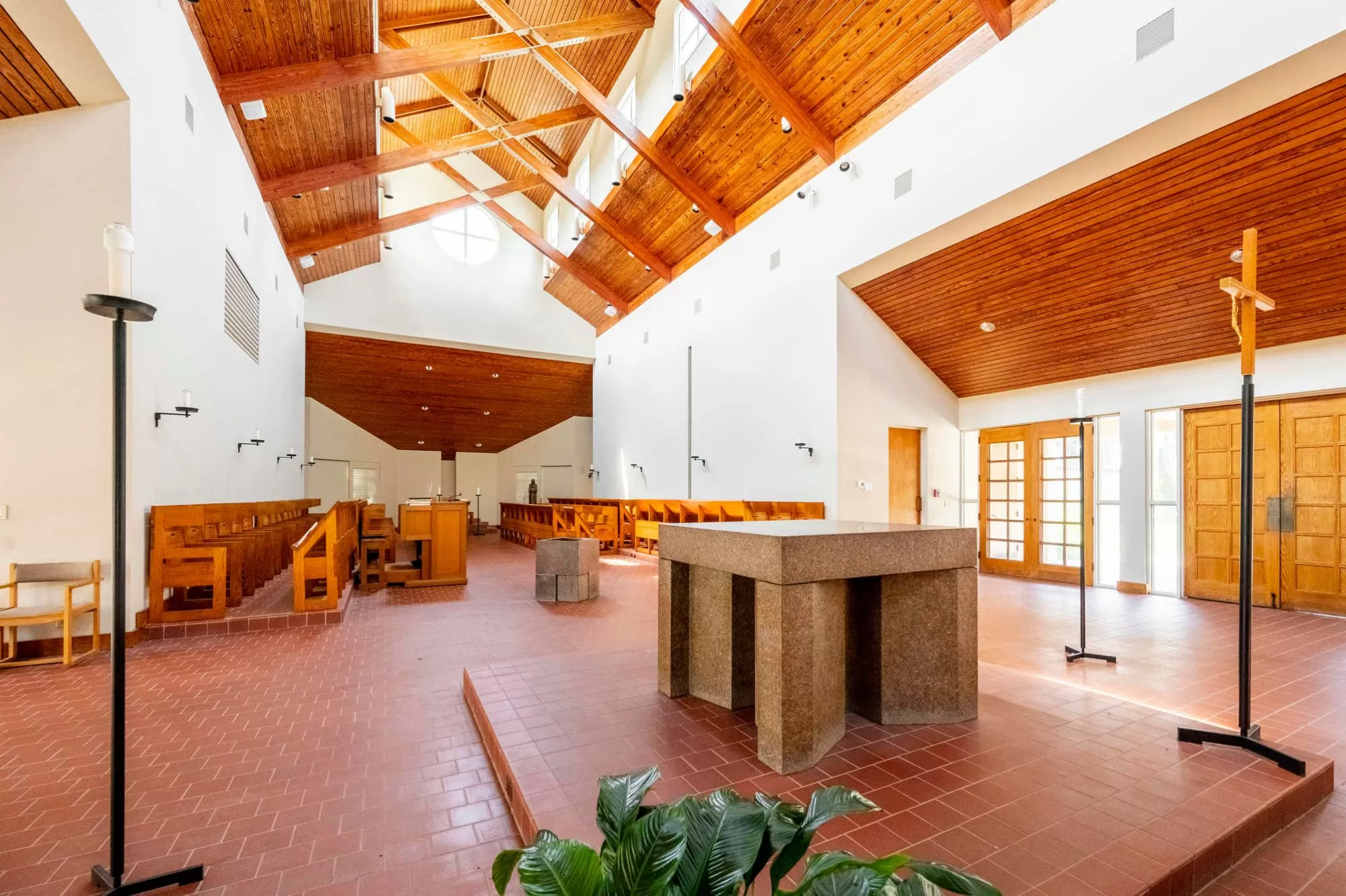
Point of Interest
Mepkin Abbey
In the late 1700s, Henry Laurens was one of the wealthiest men in South Carolina. In 1777, the diplomat was sent on a vital mission to Holland to secure a wartime loan for the fledgling American government. He was captured by a British ship near Newfoundland, charged with treason, and imprisoned at the Tower of London – the only American ever held in the famous prison.
After nearly three years of languishing captivity, Laurens was exchanged for Lord Charles Cornwallis, the British general who surrendered at the Siege of Yorktown and effectively ended the Revolutionary War. Laurens finally completed his journey to Amsterdam, secured much-needed funds, and then traveled to Paris to help negotiate the Treaty of Paris.
Finally, in 1784, Laurens returned to Mepkin Abbey. The British burned his home during the war. His only son was killed in a minor skirmish in 1782. Laurens remained at his plantation until he died in 1792.
In 1936, Henry and Clare Boothe Luce, publishers of Time and Life magazines, bought the plantation. They later donated the property to the Roman Catholic Church, and in 1949, the monks of Gethsemani in Kentucky established a Trappist monastery at the site.
Guided tours are given every Tuesday, Wednesday, and Thursday at Mepkin Abbey. The tours focus more on the history of the property since the 1940s. The only remnant of Laurens’ original plantation is the family cemetery. It’s a ten-minute walk from the parking lot, where you can see the final resting place of Henry and John Laurens.
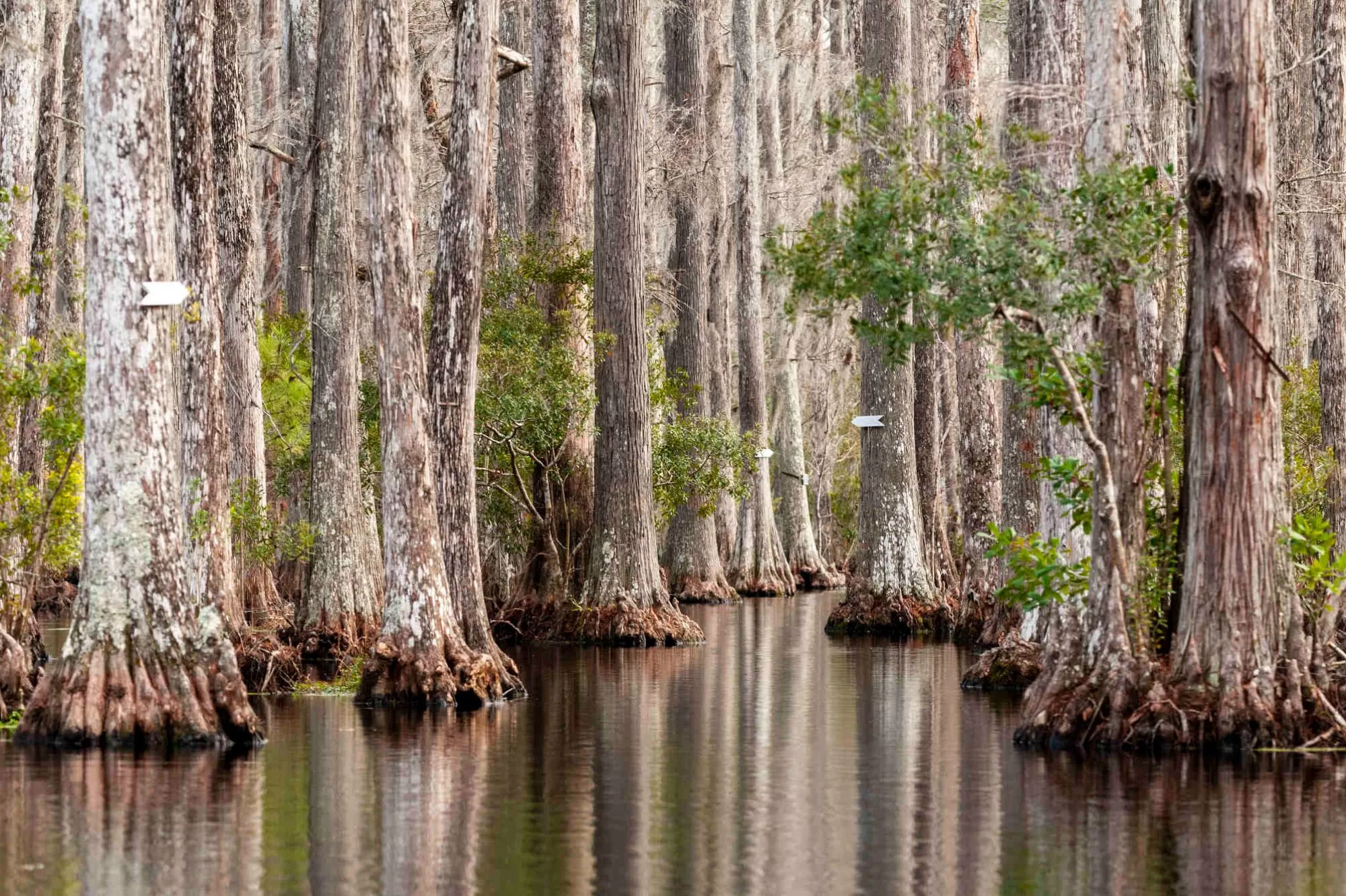

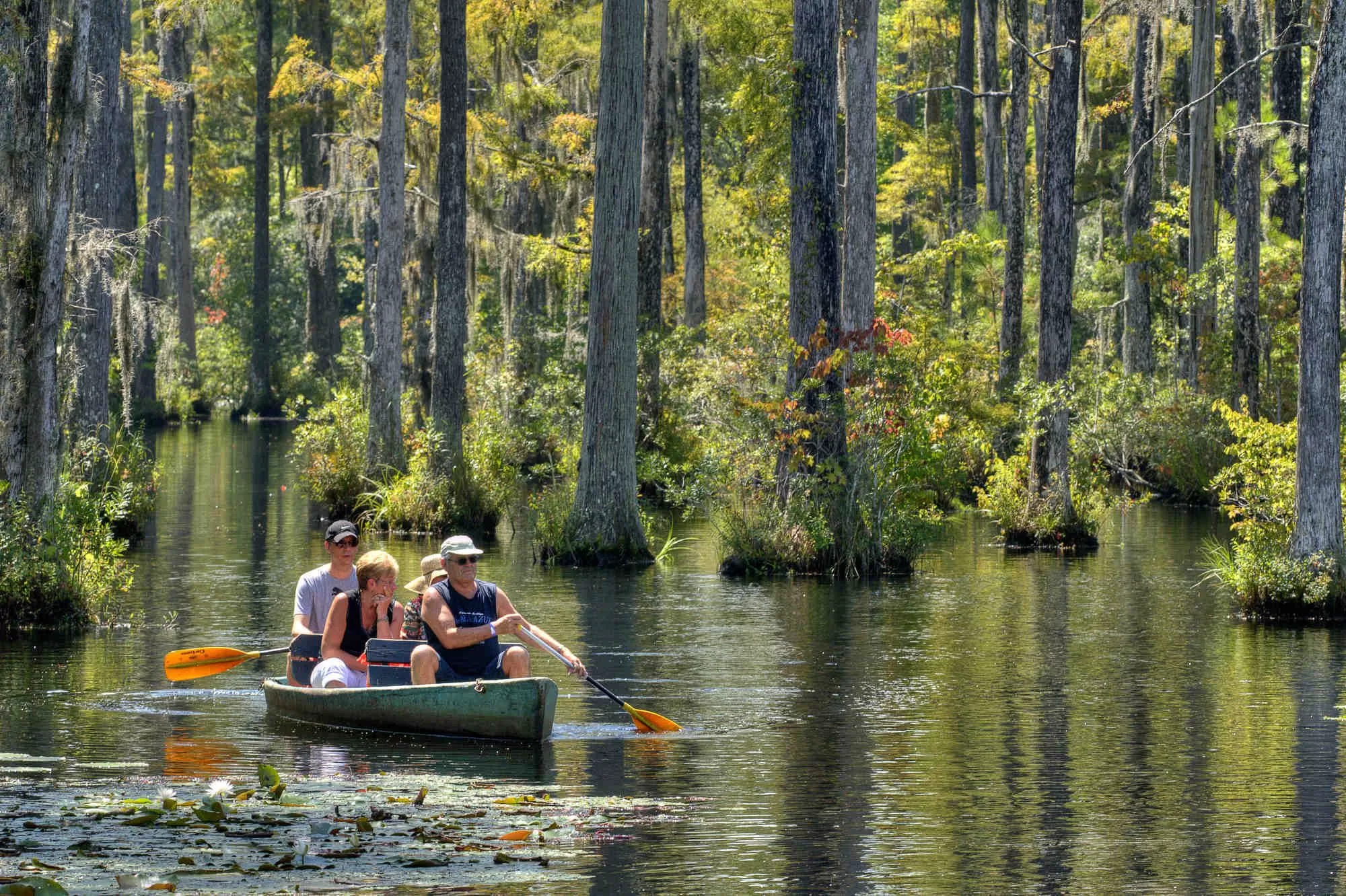
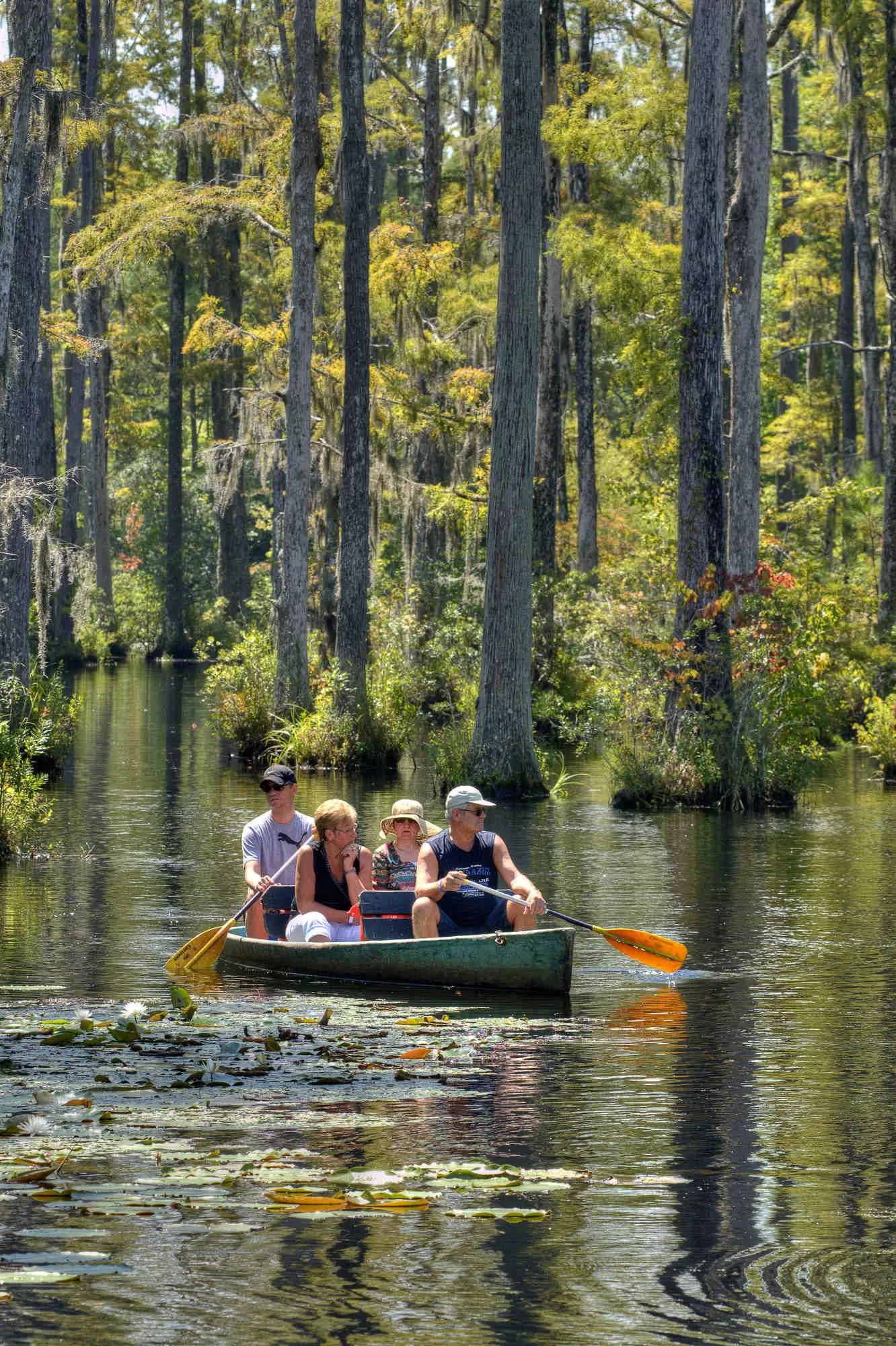
Point of Interest
Cypress Gardens
In 1909, Benjamin Kittredge rebuilt the rice field dikes at the defunct Dean Hall Plantation. He planted trees, shrubs, and flowers. After over twenty years of work, he opened Cypress Gardens to the public in 1932.
You won’t learn anything about the Revolutionary War at Cypress Gardens. But you can see where scenes from The Patriot were filmed. It’s also a great opportunity to explore a swampy botanical garden and learn how Marion must have felt.
Walk around the 170-acre botanical garden on trails that loop around the swamps and cross over gorgeous wooden bridges. Take a guided boat tour to see the wildlife, or rent a kayak to explore on your own.
South Carolina Revolutionary War Road Trips
Read the other articles in this 10-part series:
Part 1 – The Olde English District
Part 3 – Lake Hartwell Country
Part 10 – Santee Cooper Country
And be sure to read this additional article:
6 Places to Experience the Revolutionary War in South Carolina’s Capital City Region
